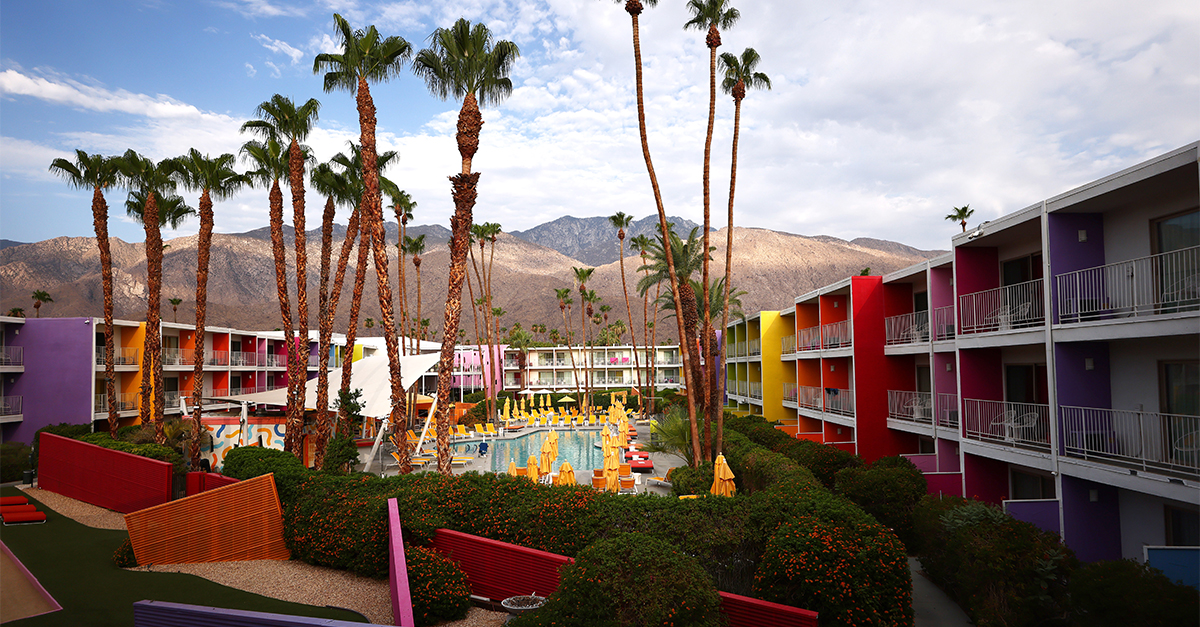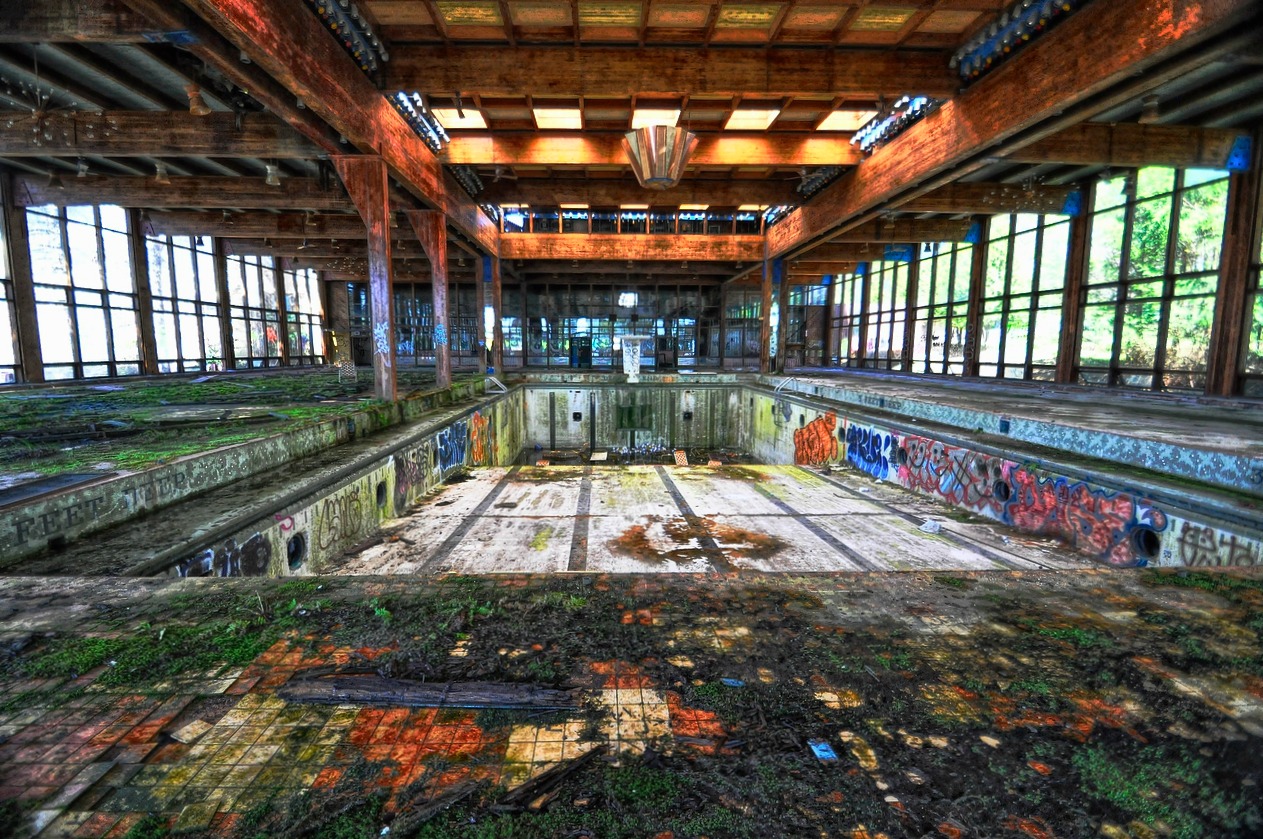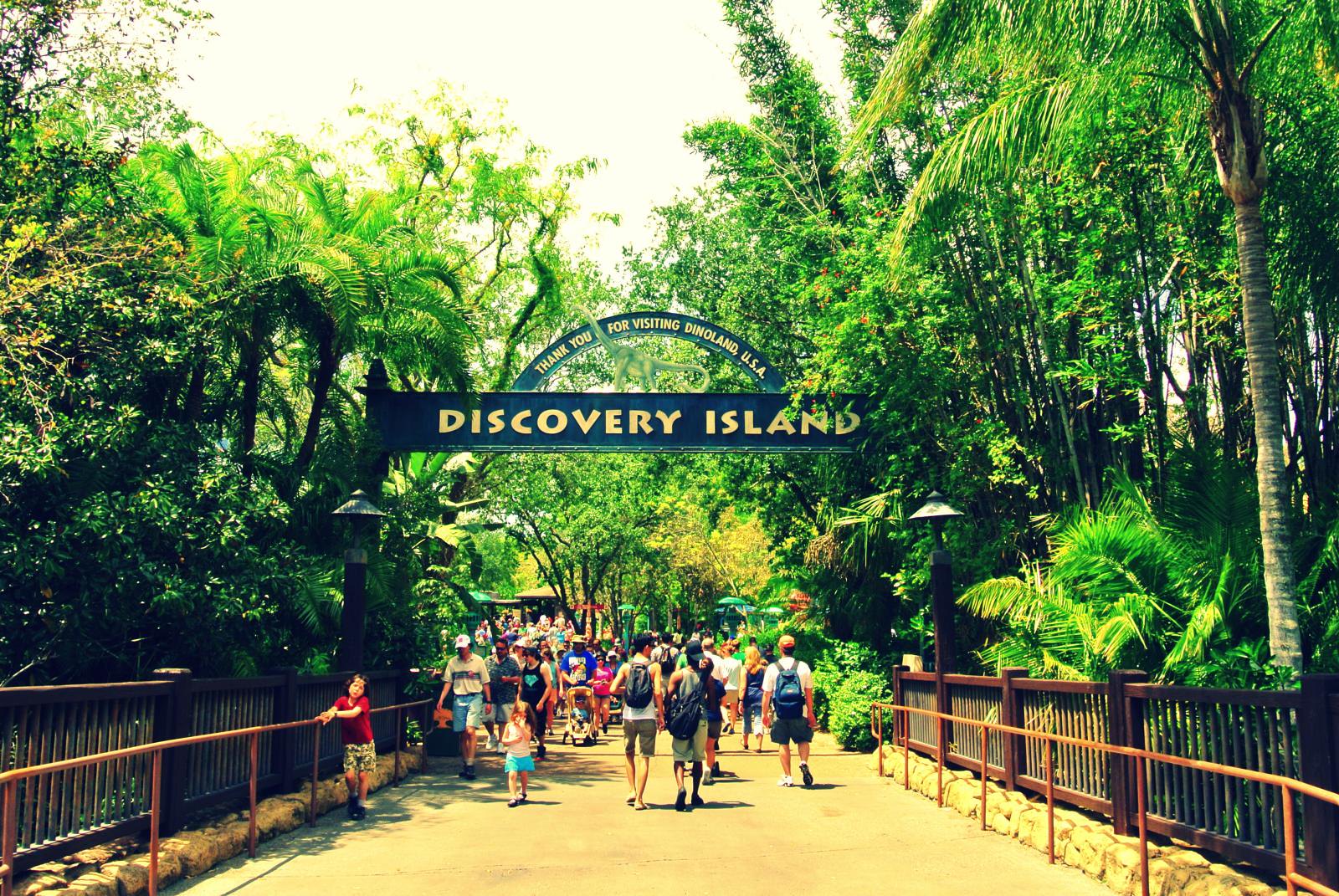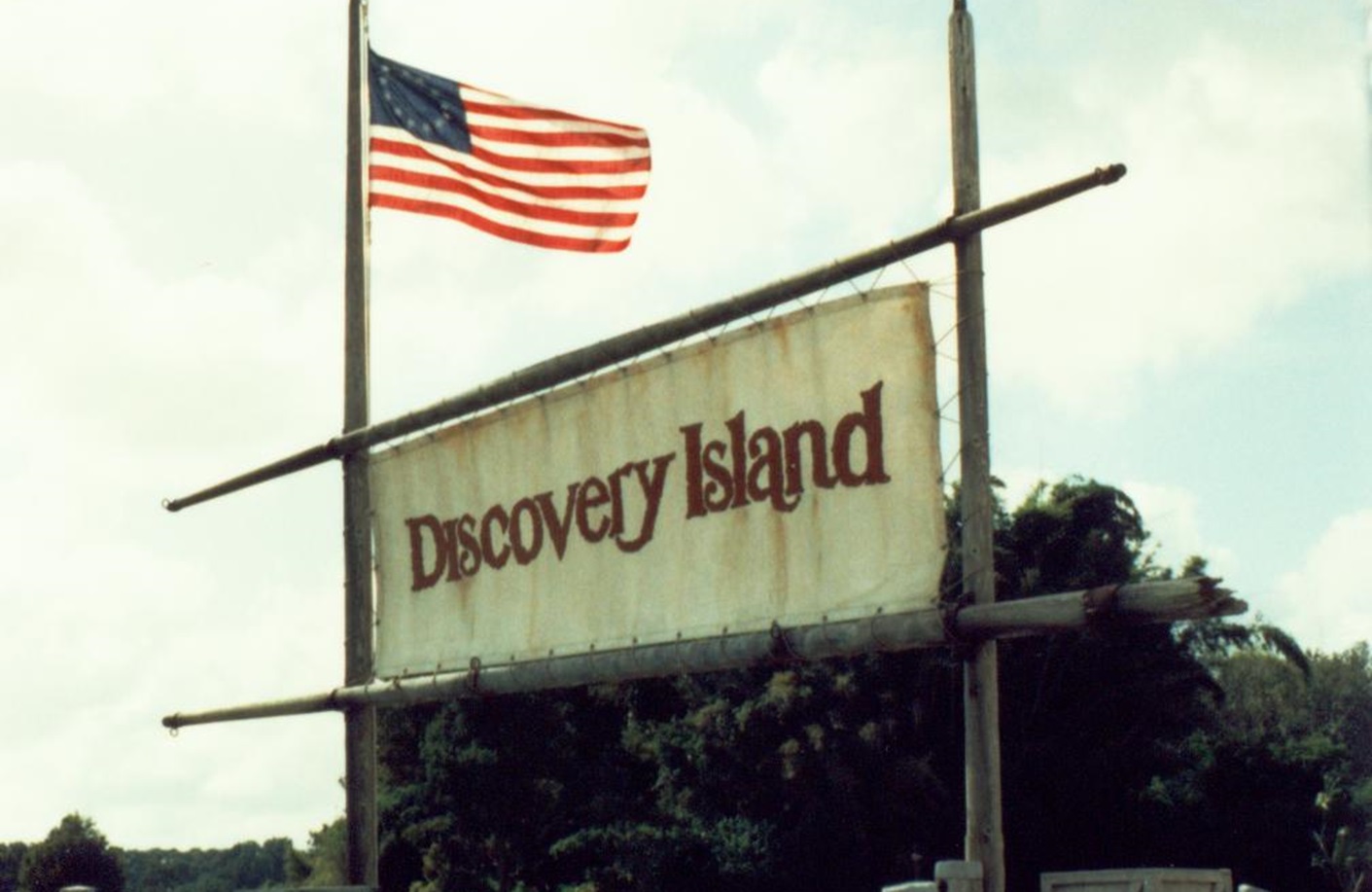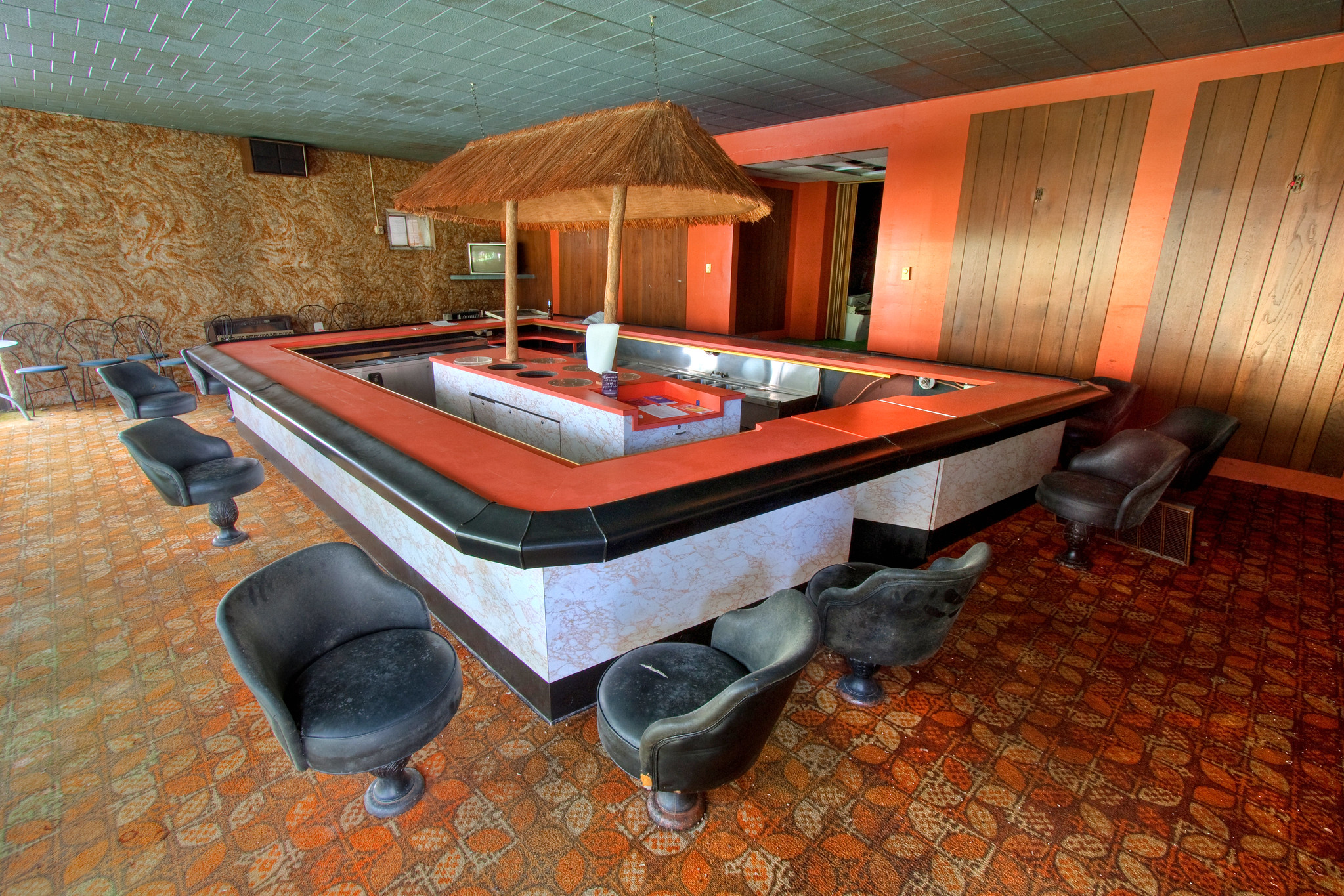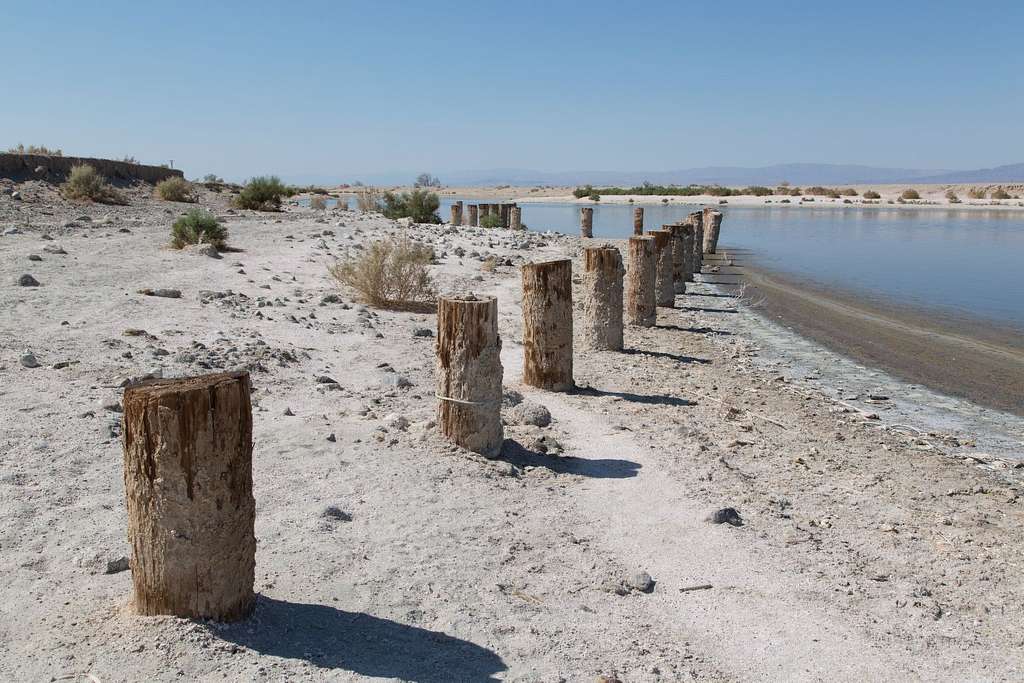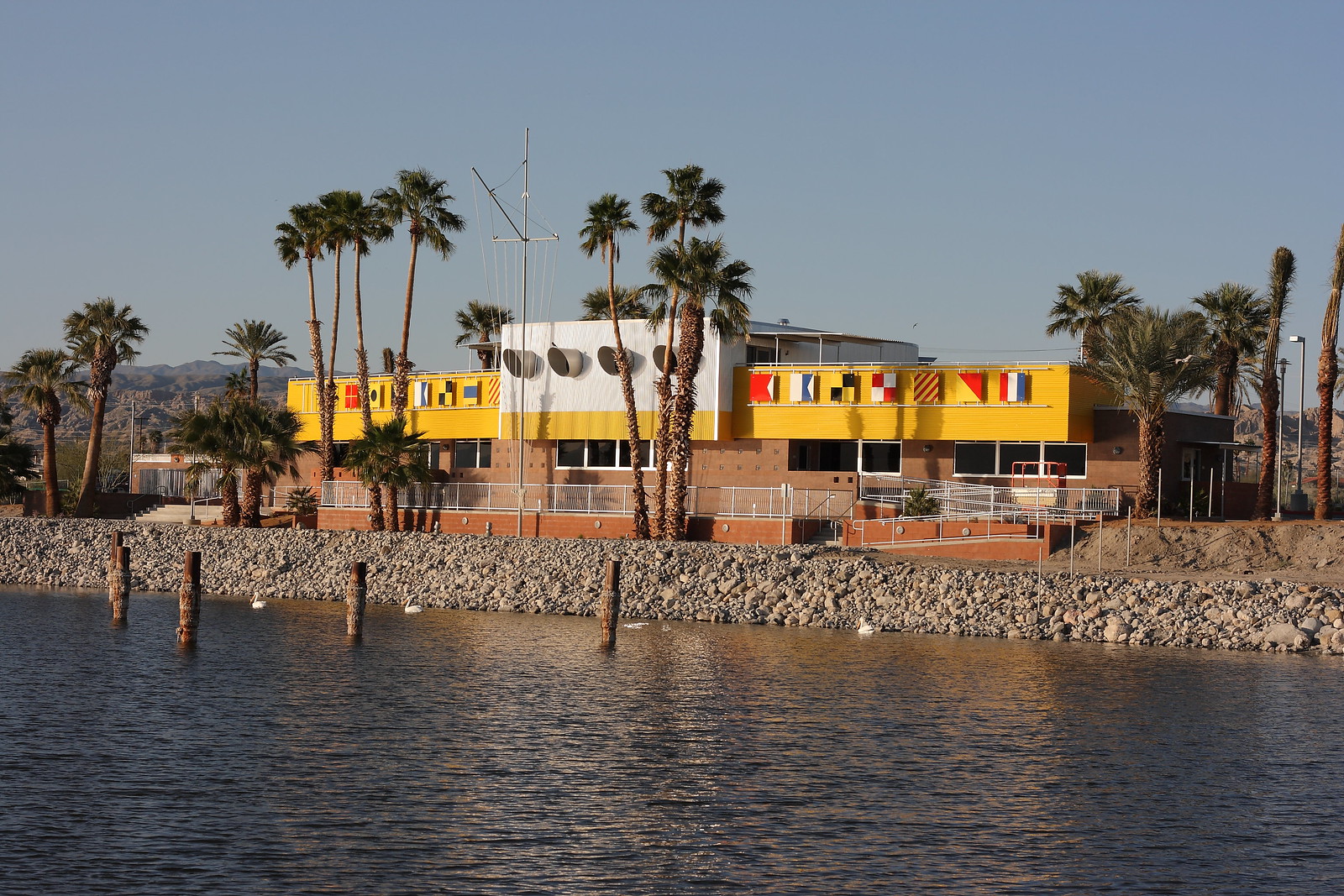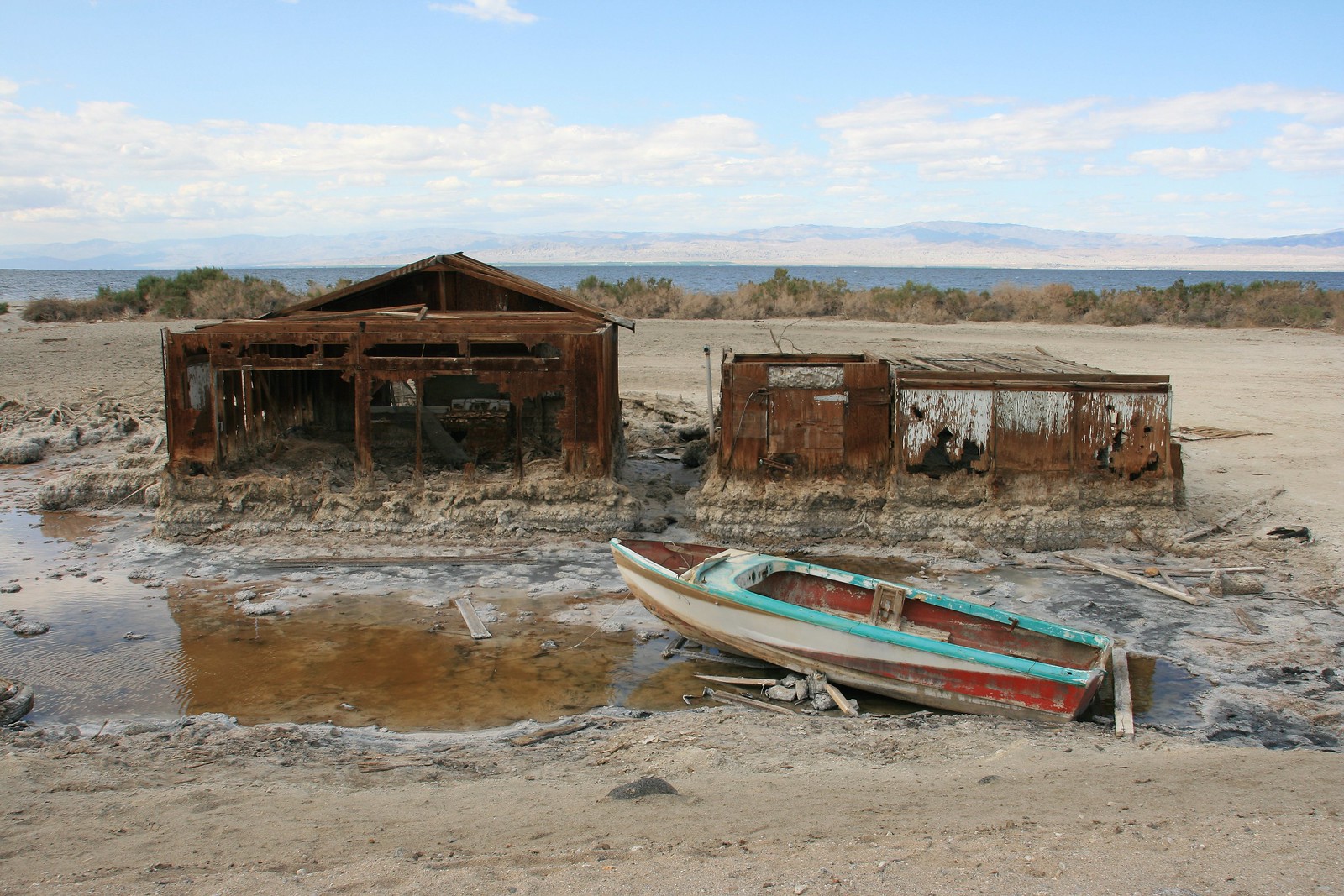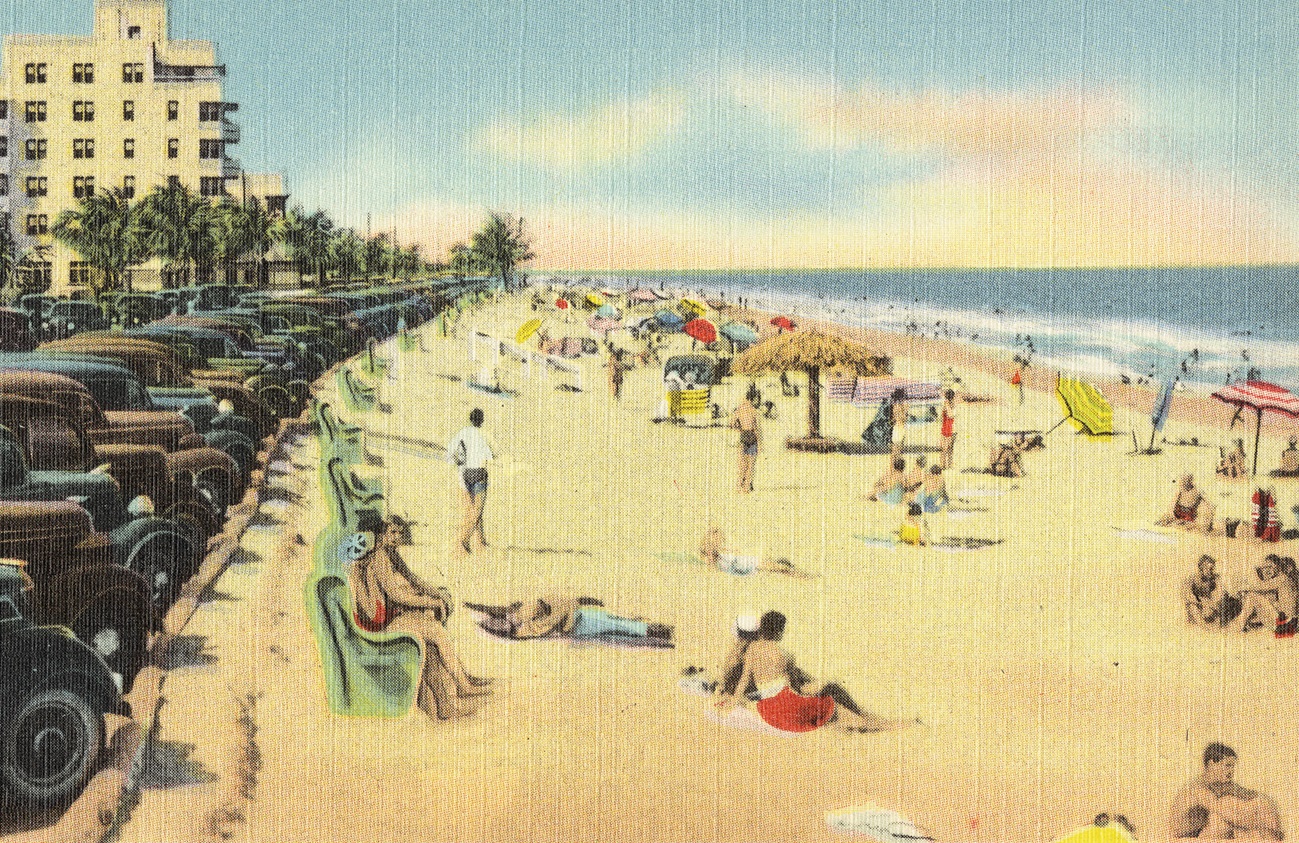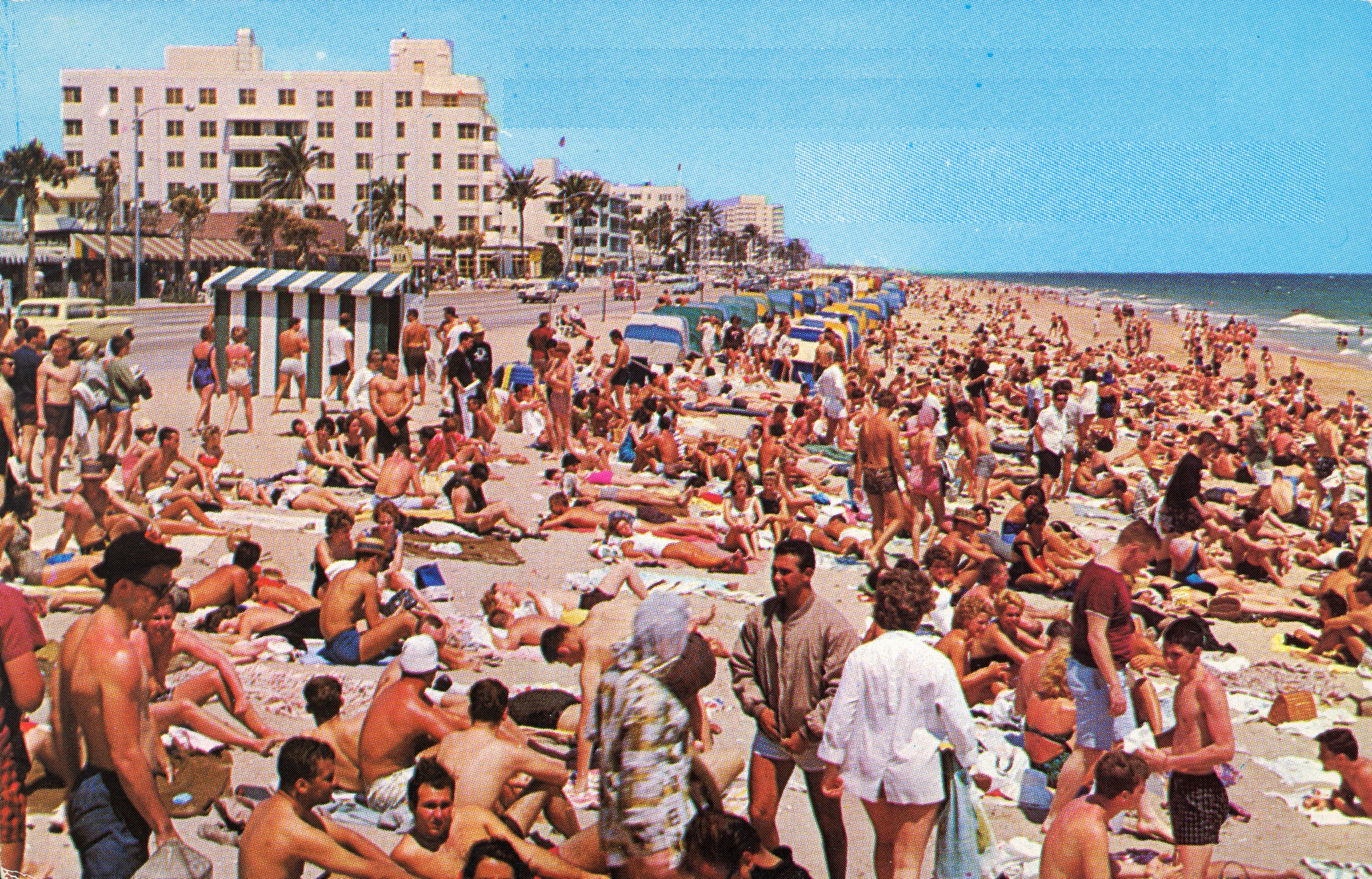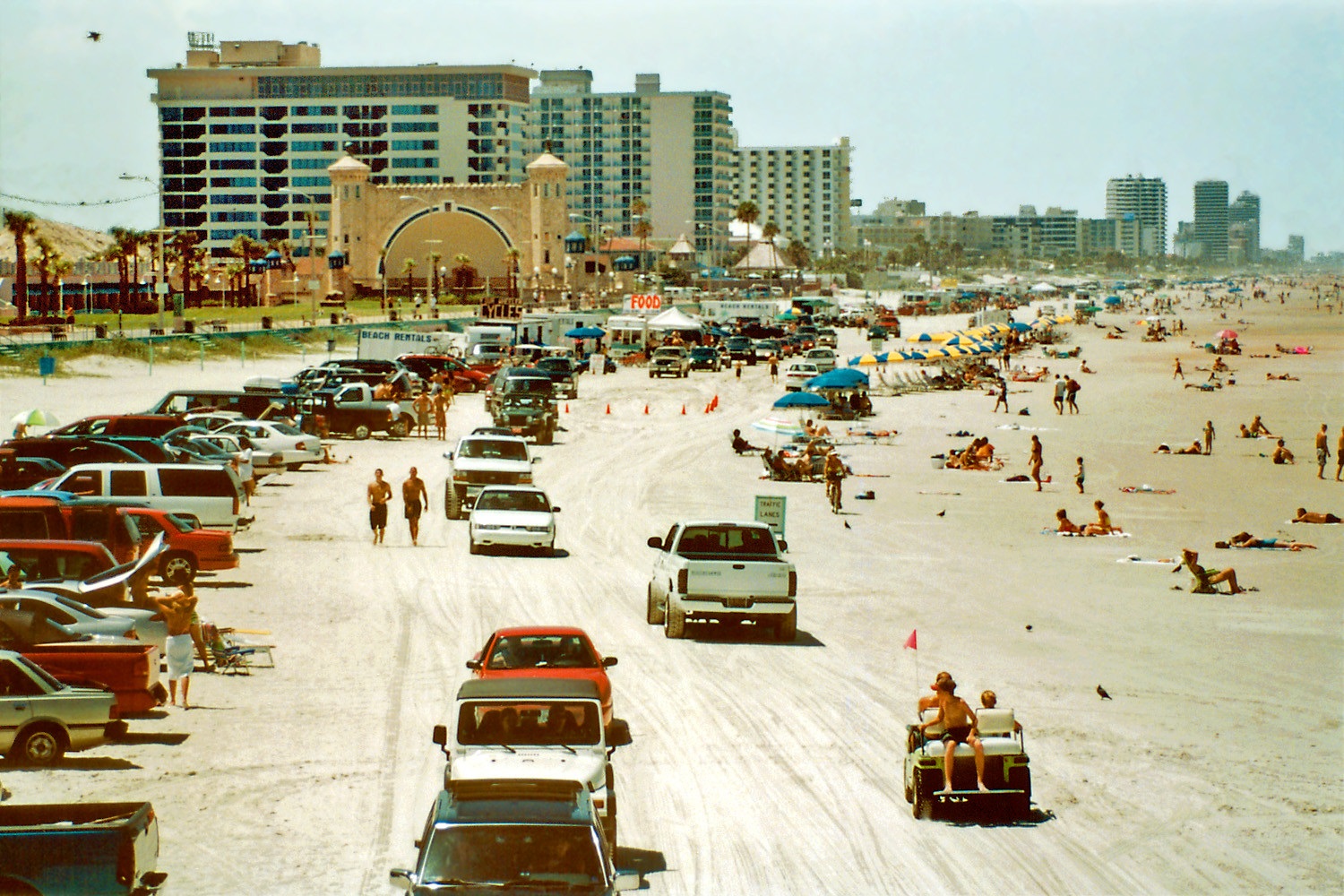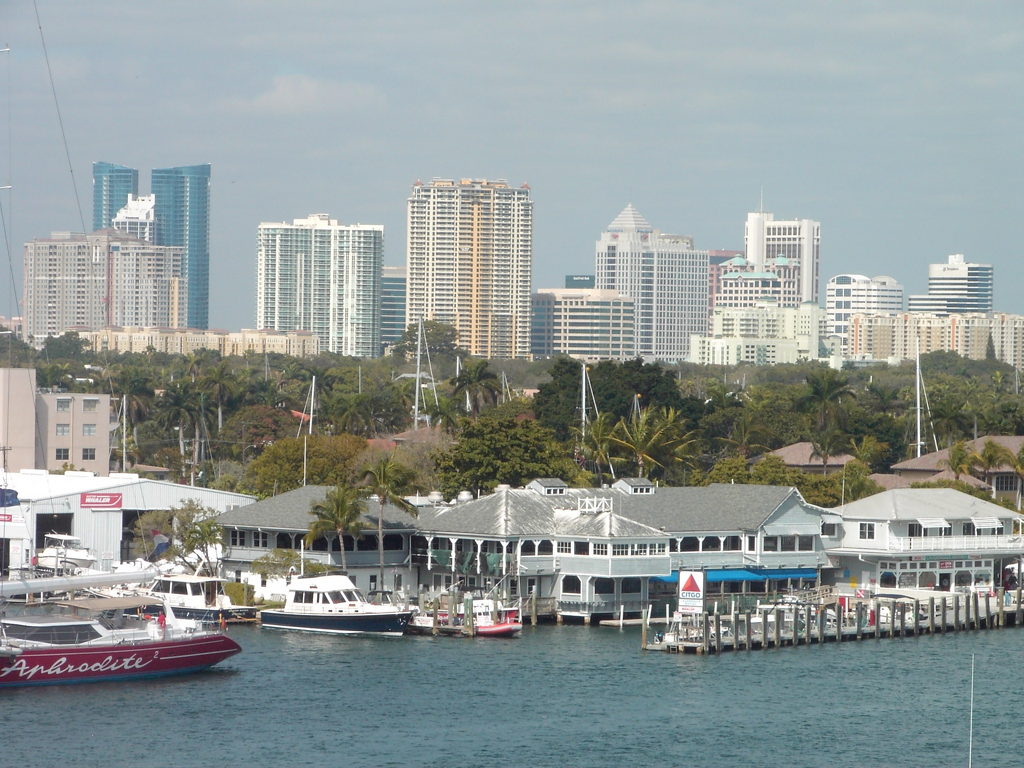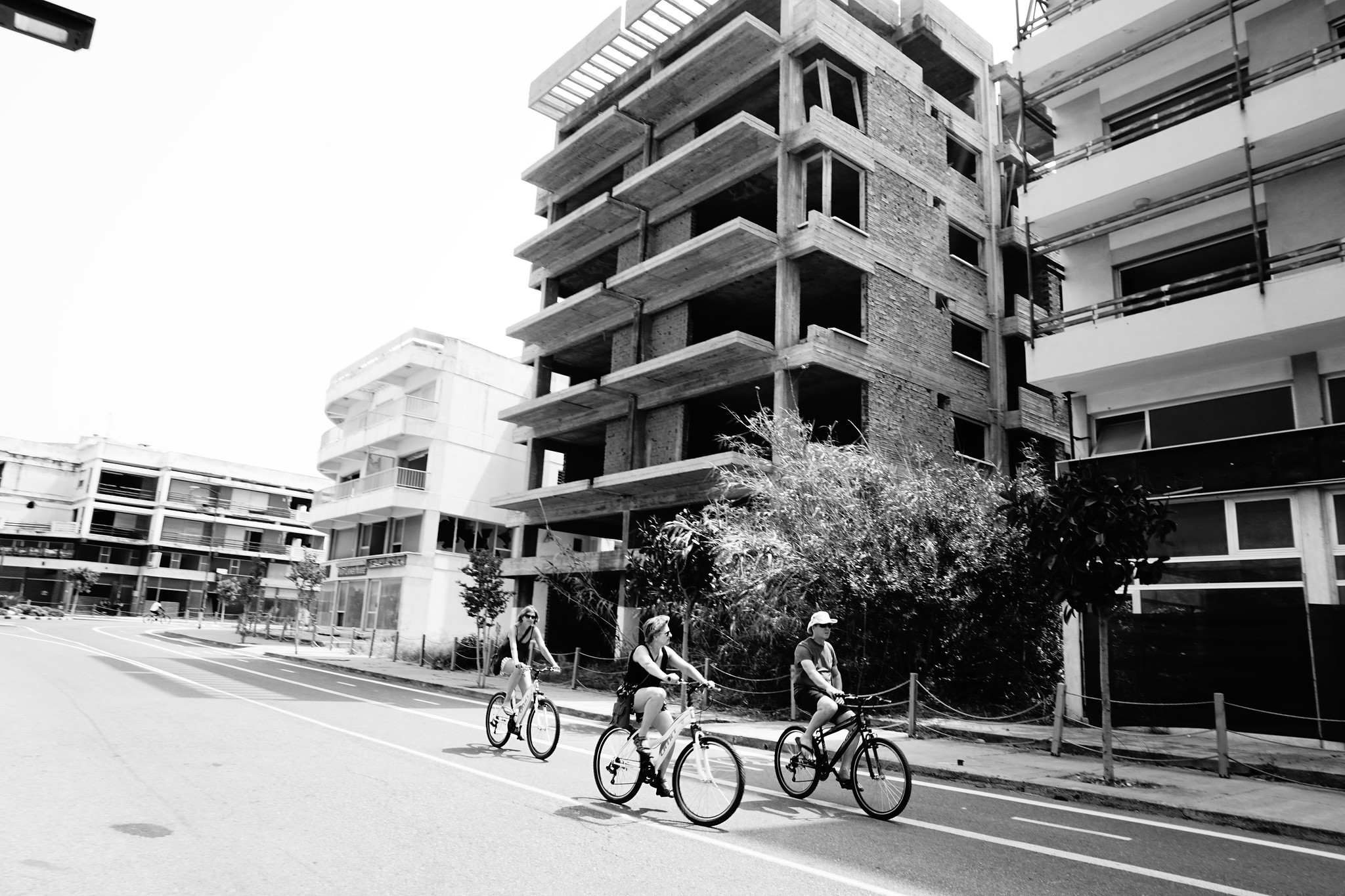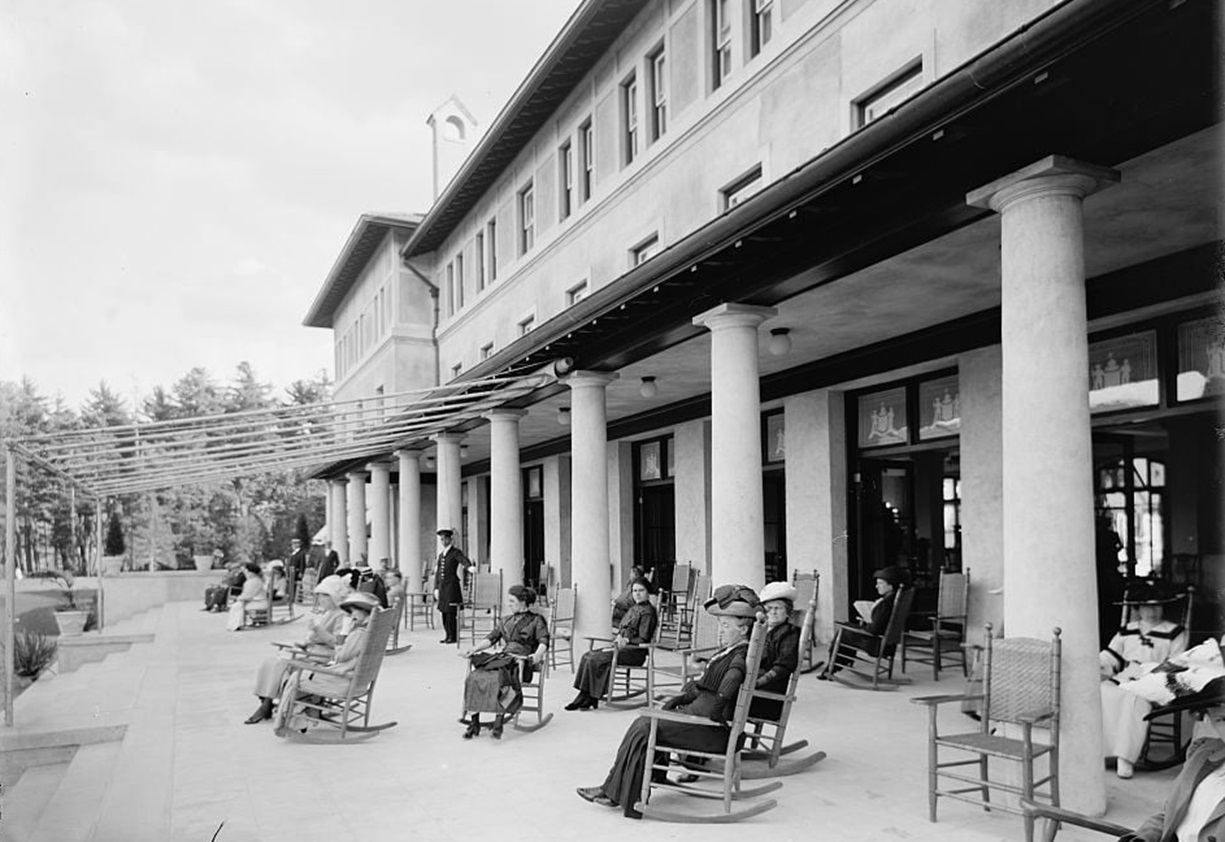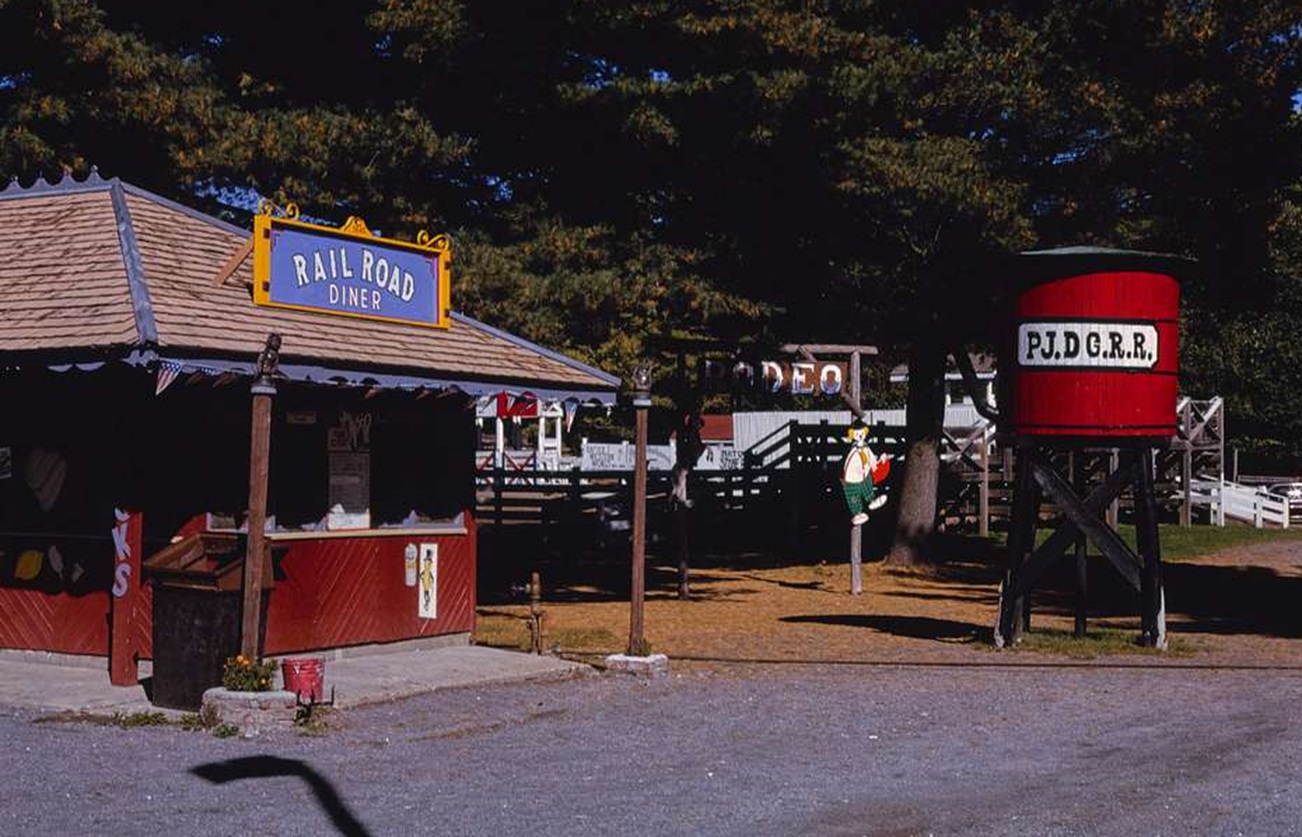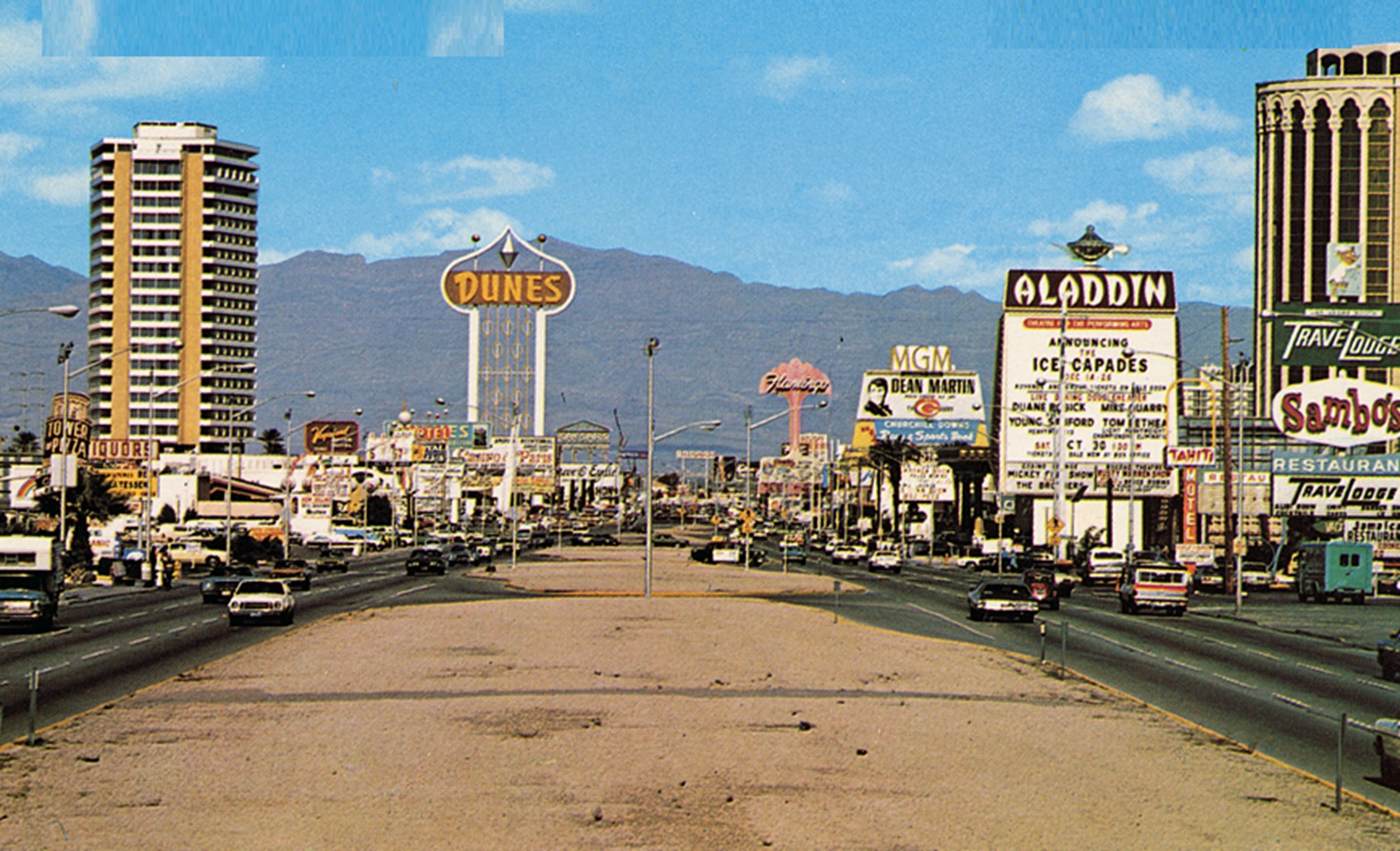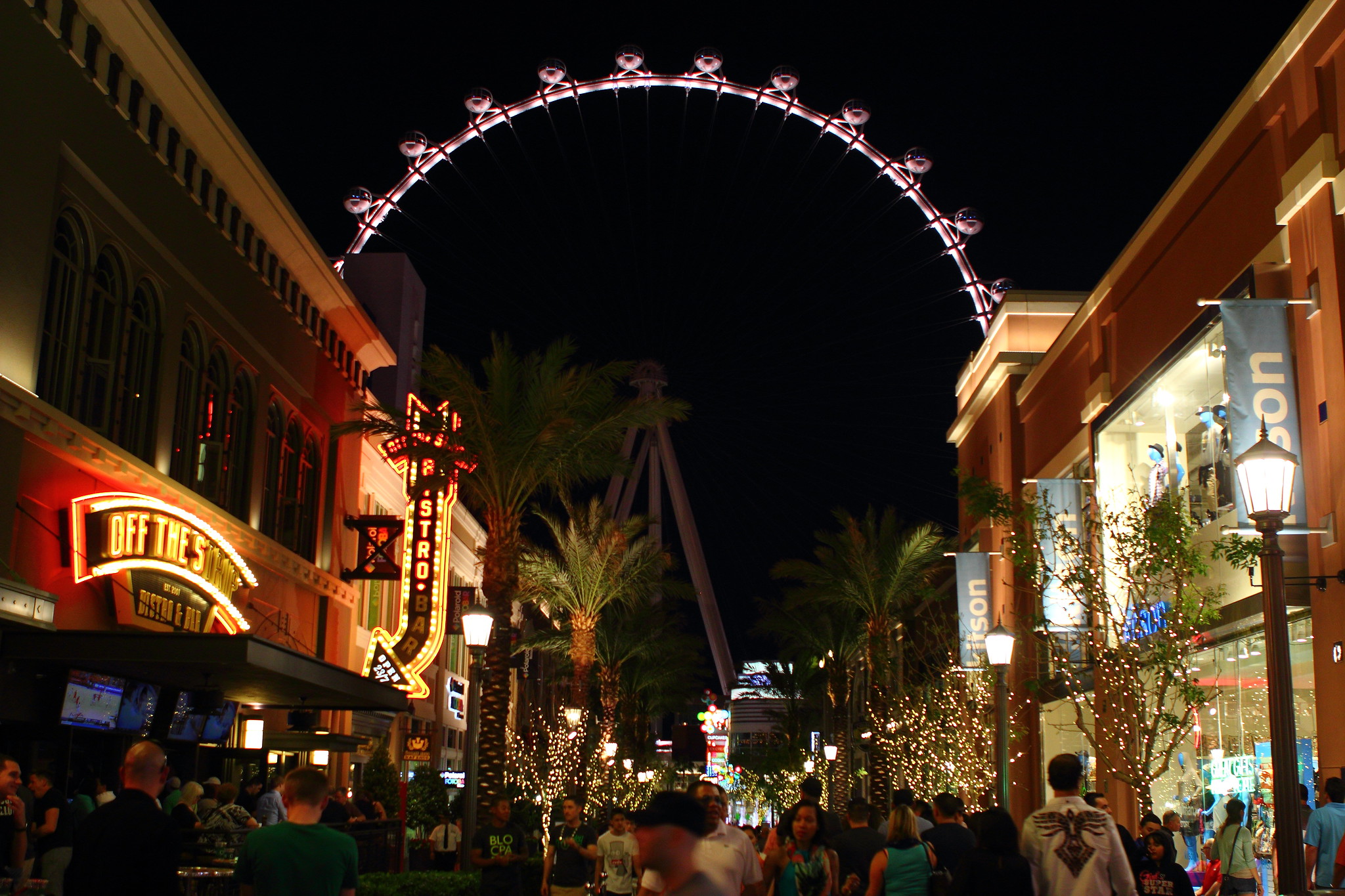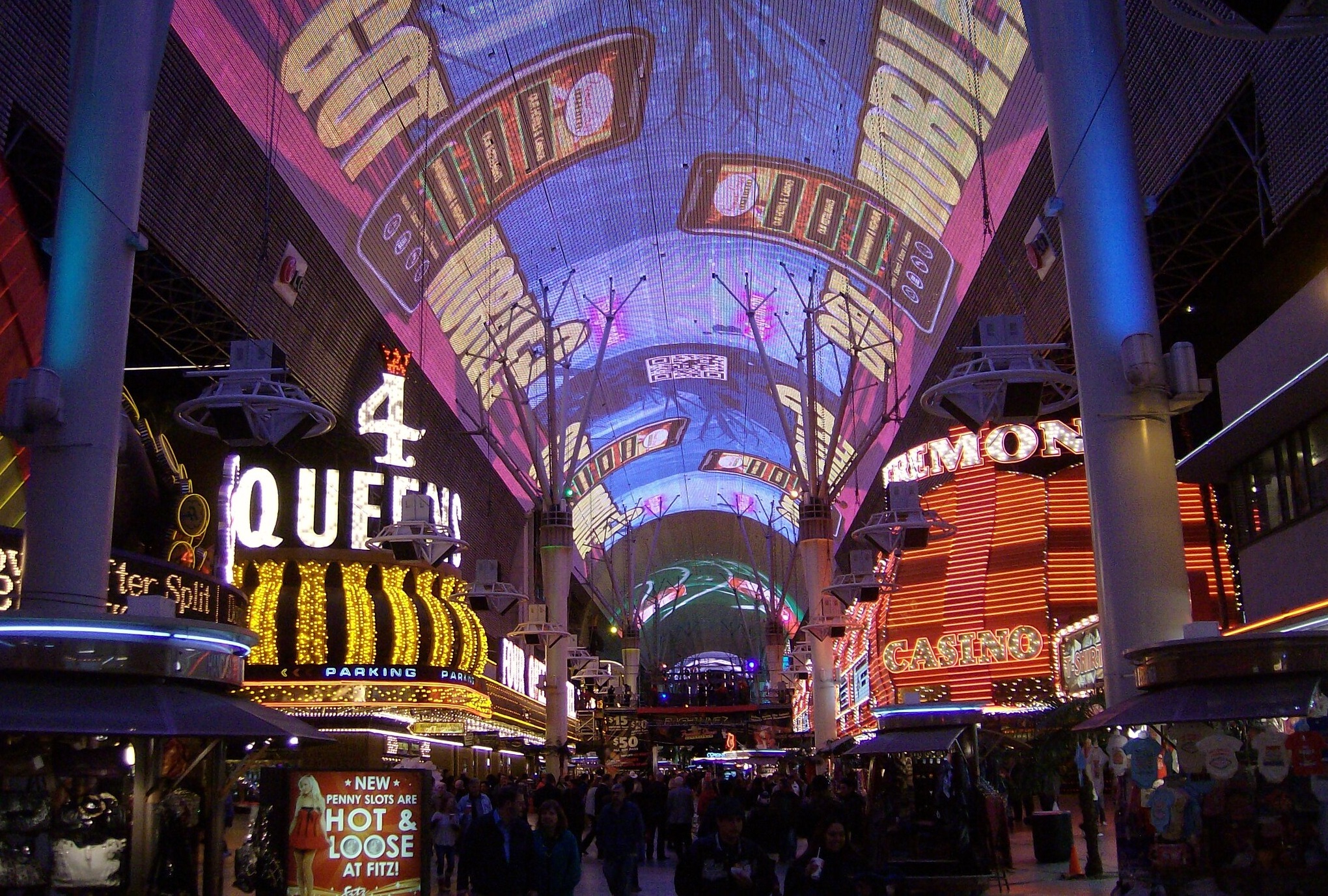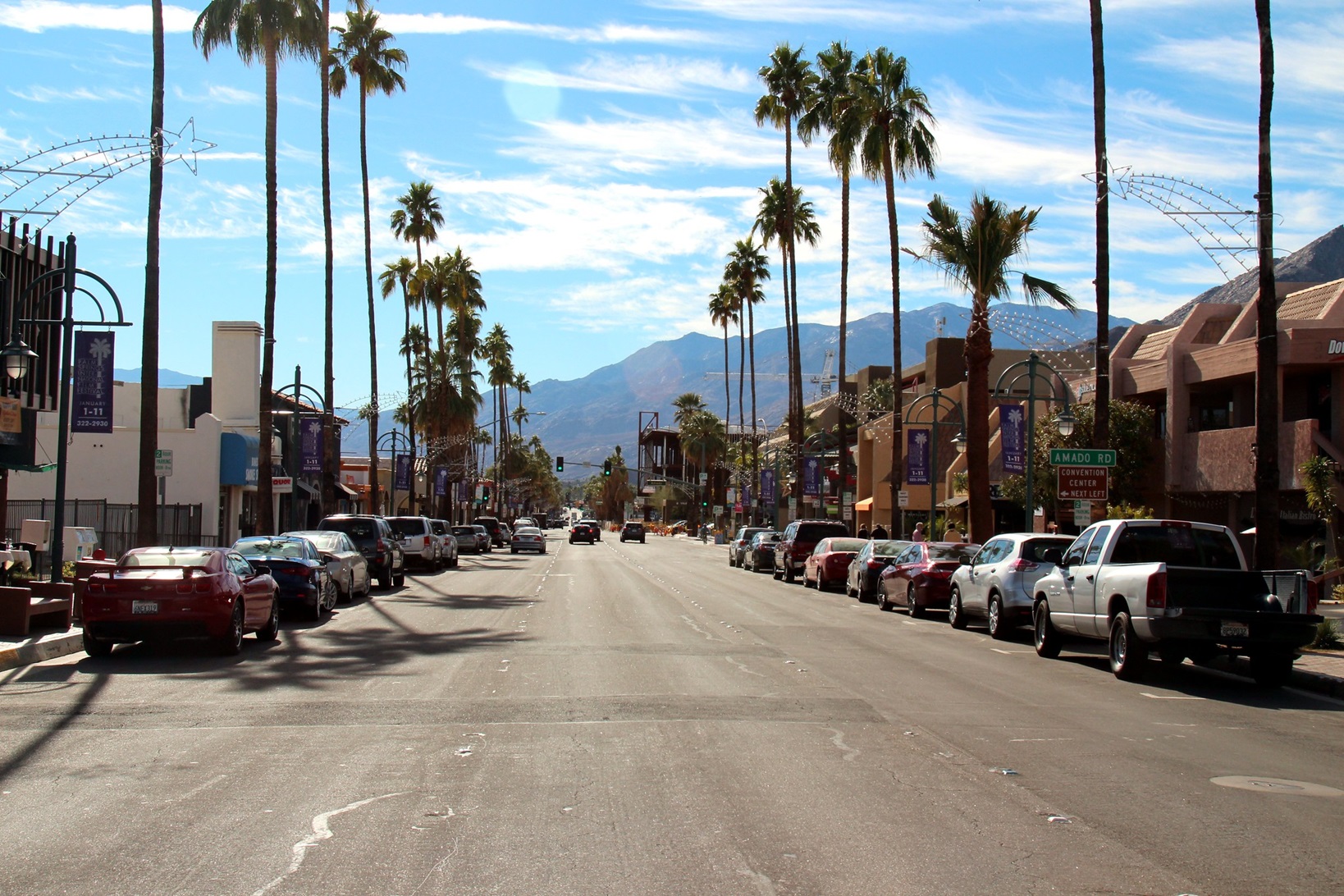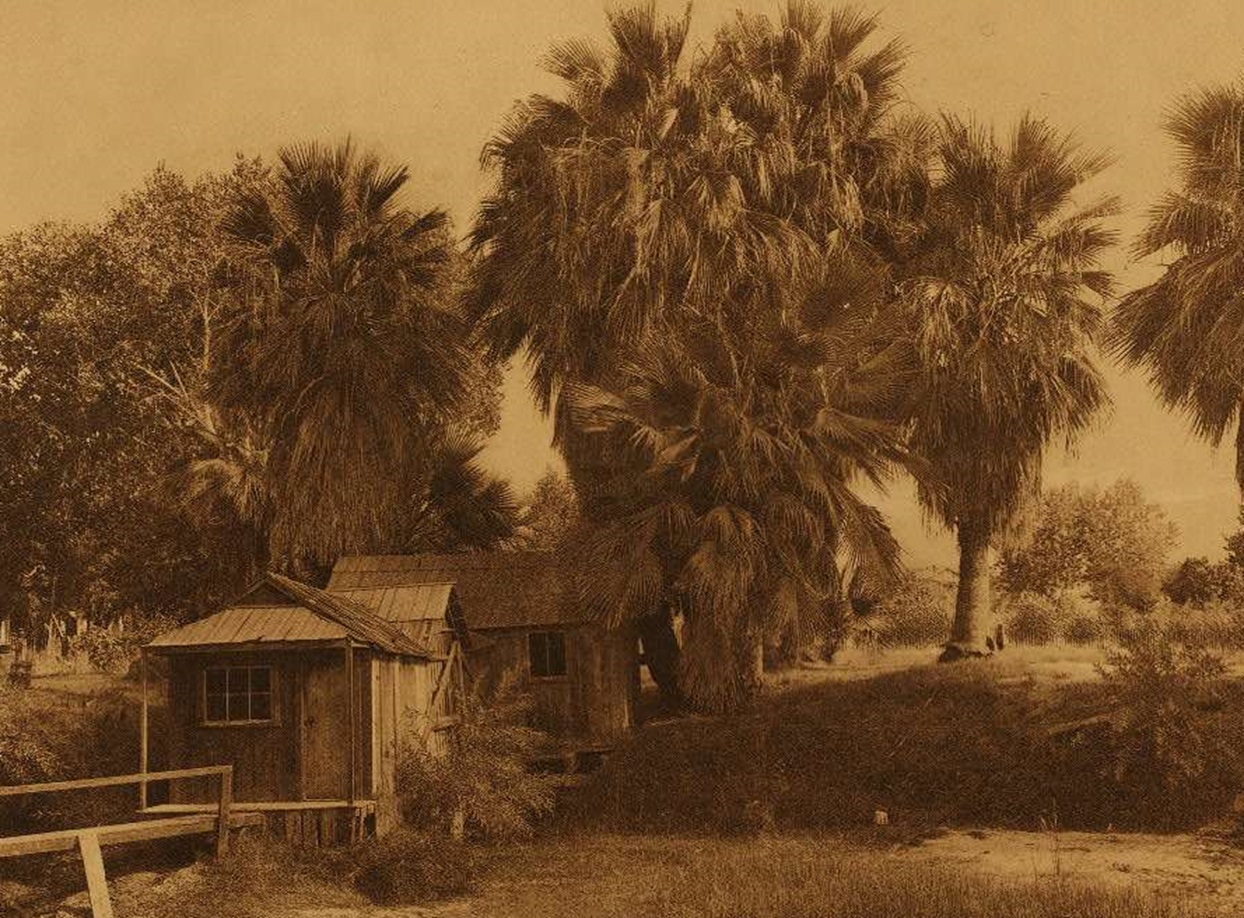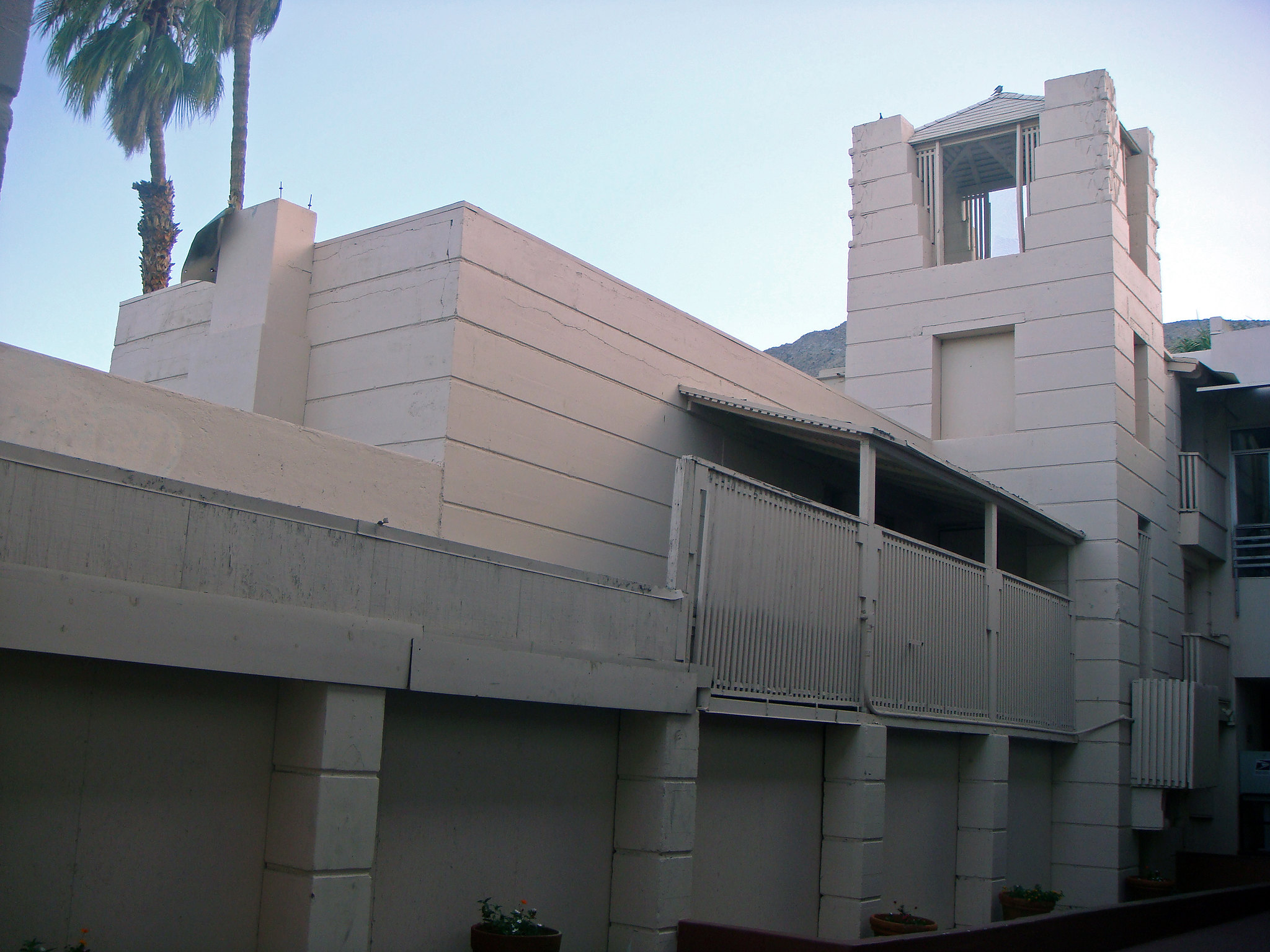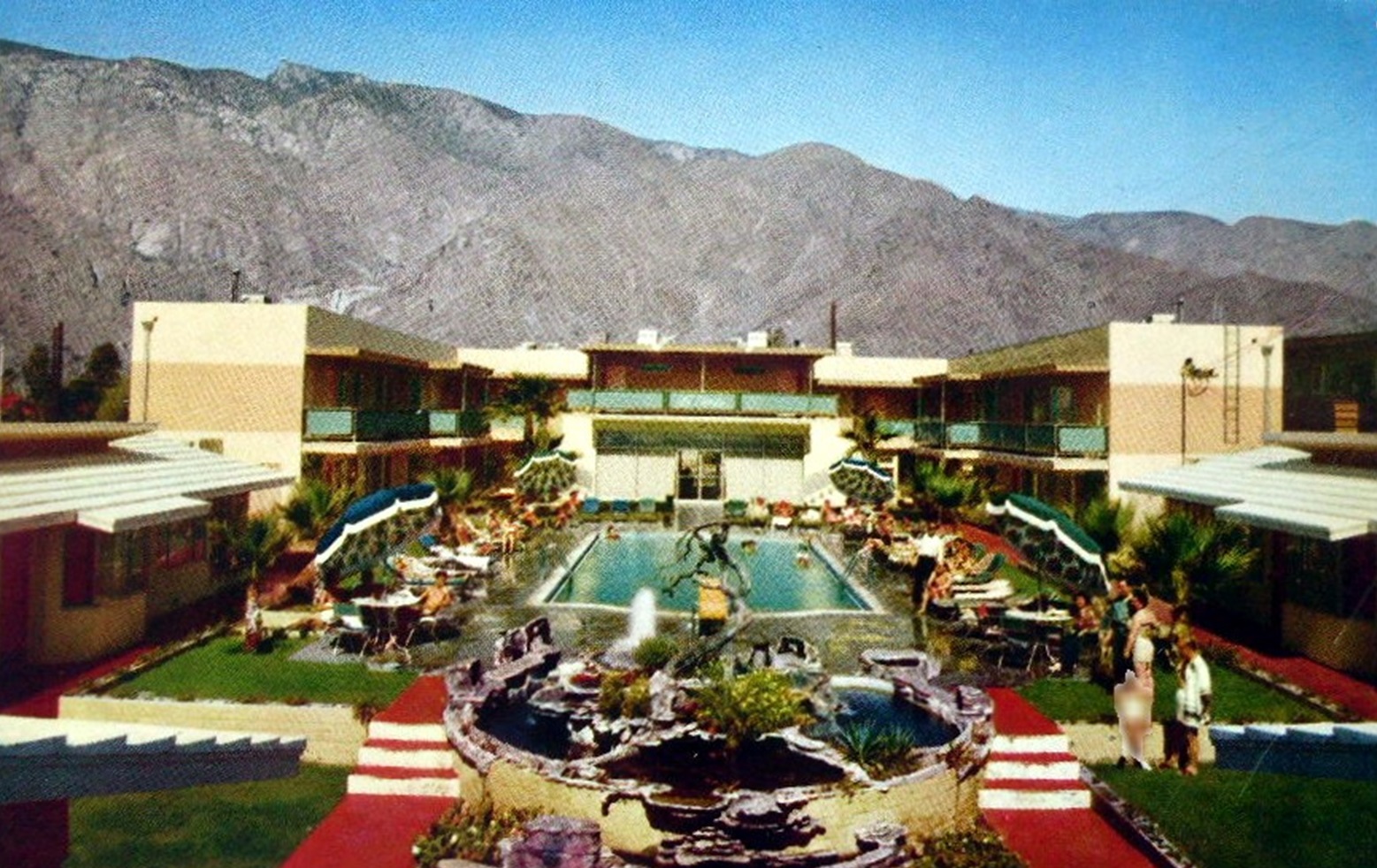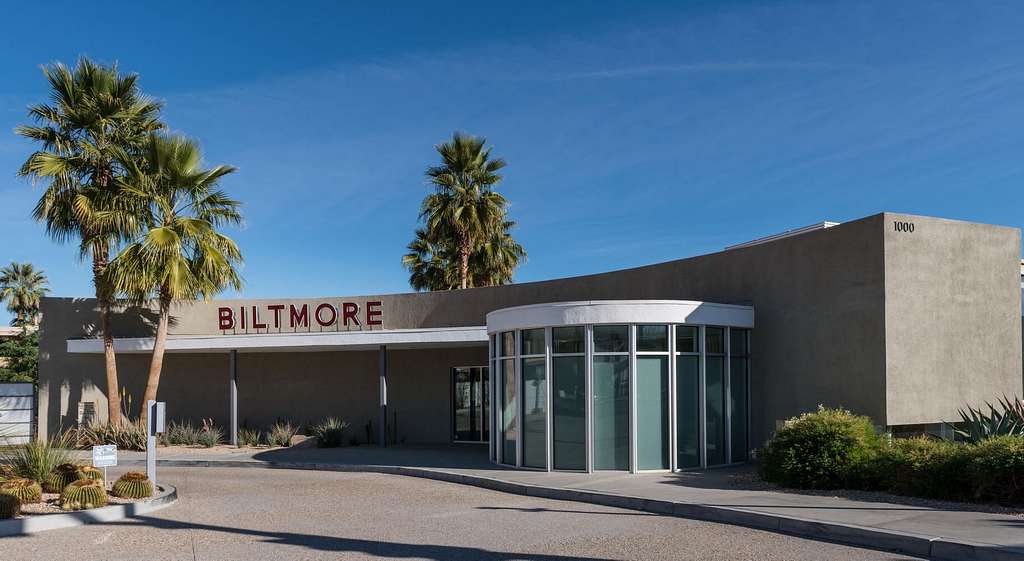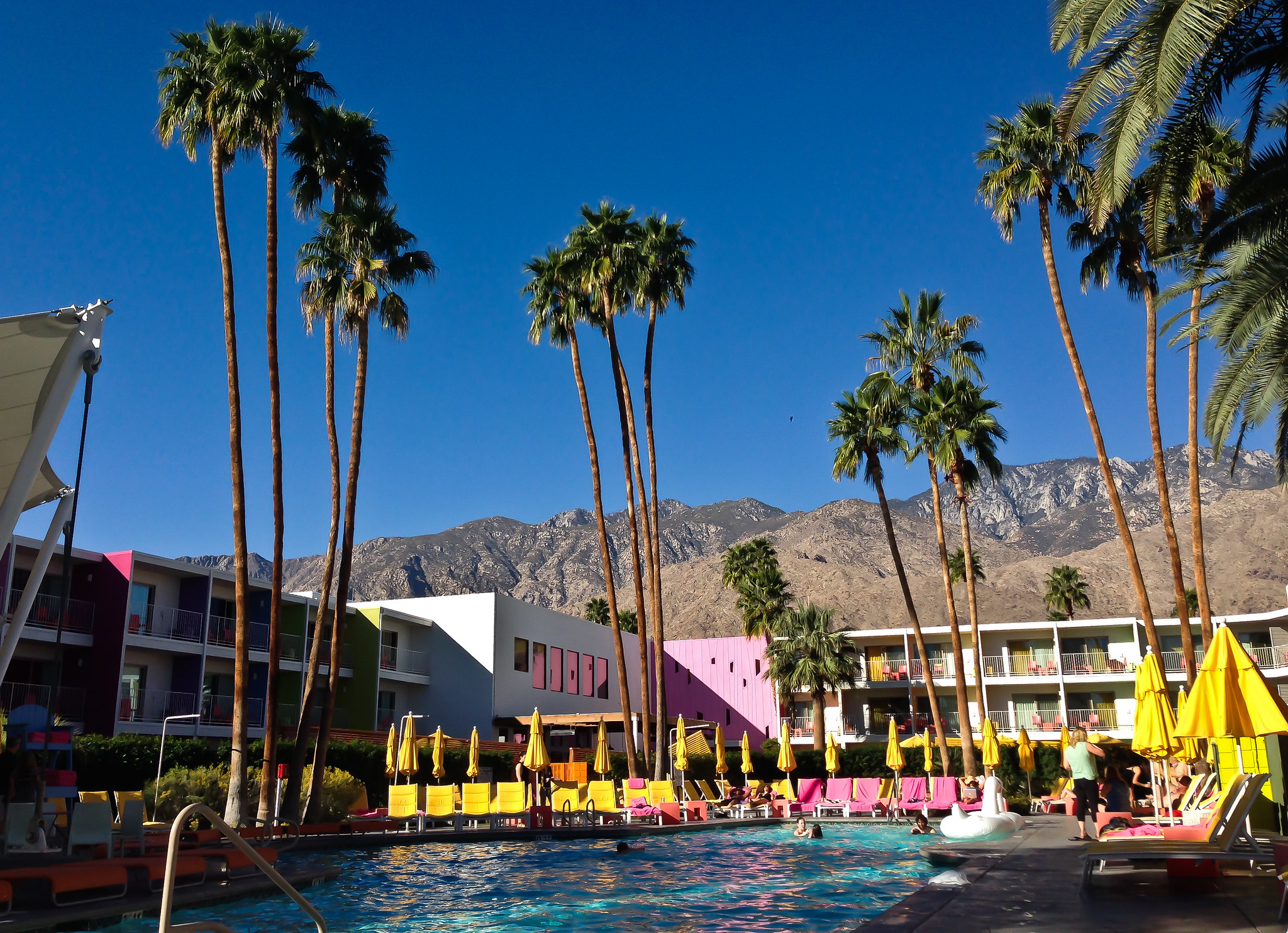The Tide Has Turned
Once upon a time, families all over the country dreamed of going to the famous resorts in places like the Catskills and the Salton Sea, among others. But over the years, things have fallen apart. What do the dream destinations of the past look like today?

The Catskills
When New York City hit a population of 10 million, making it the first “megacity” in the world in the 1930s, it had a ripple effect that reached hundreds of miles in nearly all directions. As the city grew even more in the decades that followed, people chose to move to the suburbs, which grew exponentially. And then, there was the need for places for them to take vacations with their family.
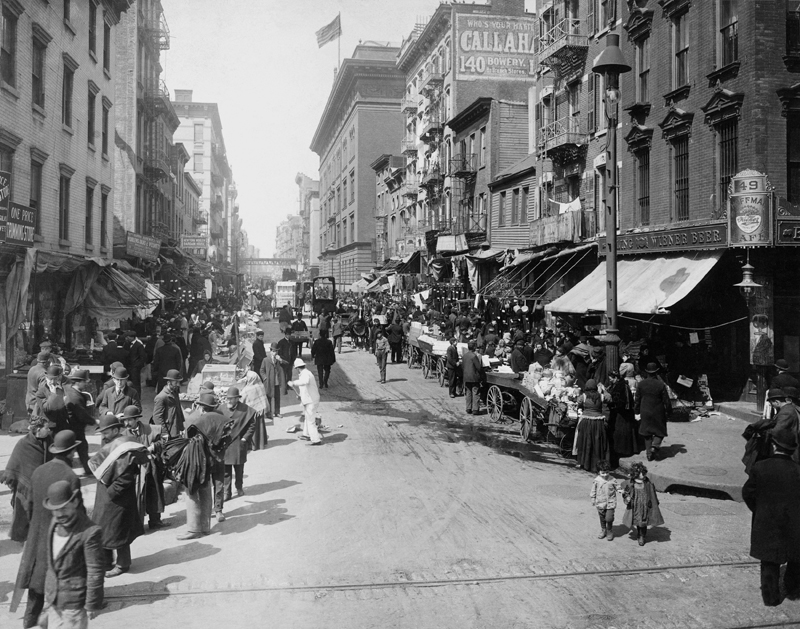 Brown Brothers, Wikimedia Commons
Brown Brothers, Wikimedia Commons
Vacation, All I Ever Wanted
Before the advent of air conditioning, leaving the city in the summer was basically a necessity—and people tended to choose destinations that could be reached by train. With the expansion of certain railroad lines, the Catskill Mountains became a desirable location and dozens of resorts began to pop up between the rolling hills and the rivers that were ripe for trout-fishing.
But there was something different about the Catskills…
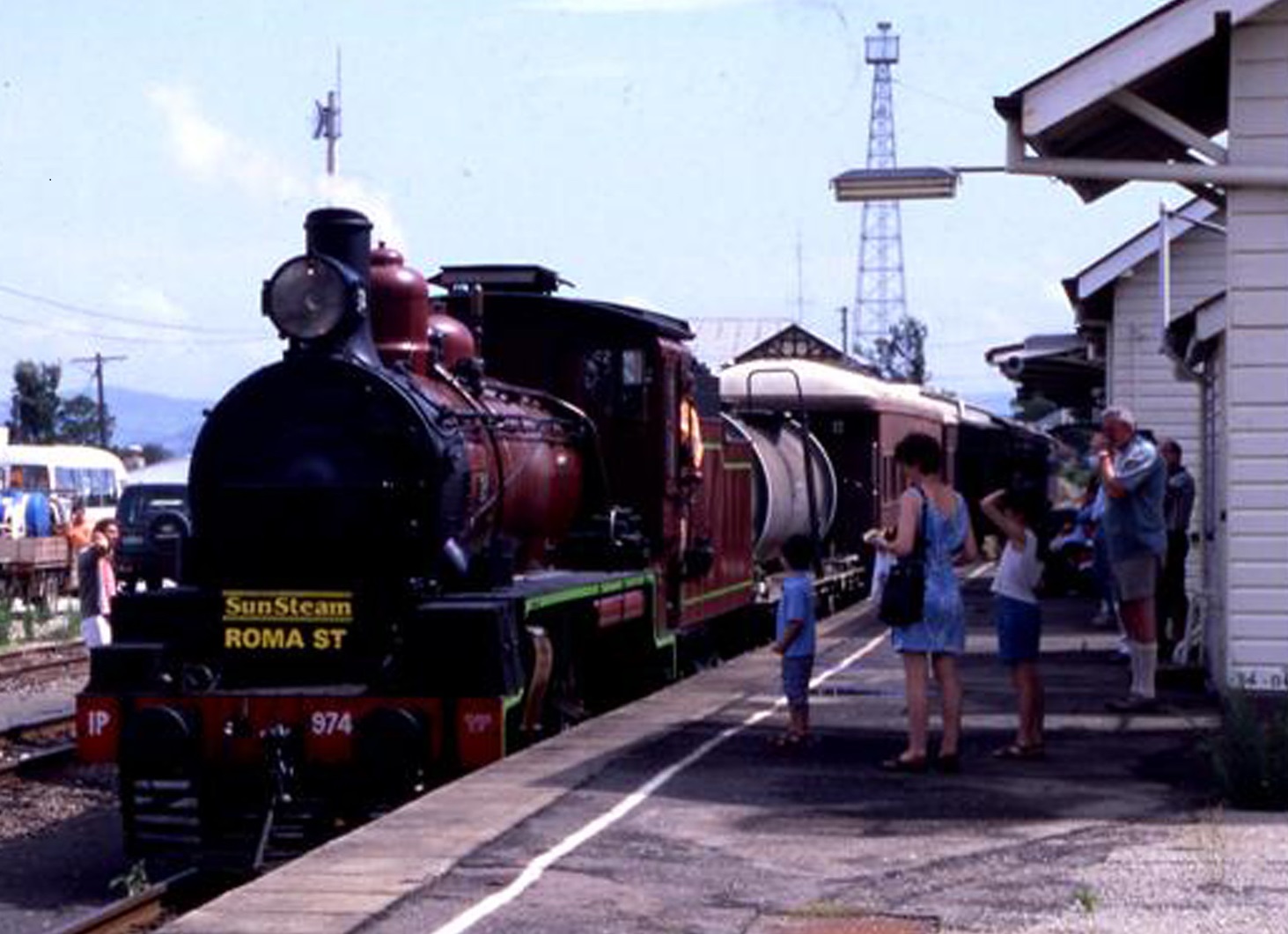 Queensland State Archives, Flickr
Queensland State Archives, Flickr
The Borscht Belt
The Catskills became a destination for Jewish families from the late 19th century, and hotels and resorts popped up to serve them, offering Friday night services and kosher food. The area eventually became known as the Borscht Belt as a result.
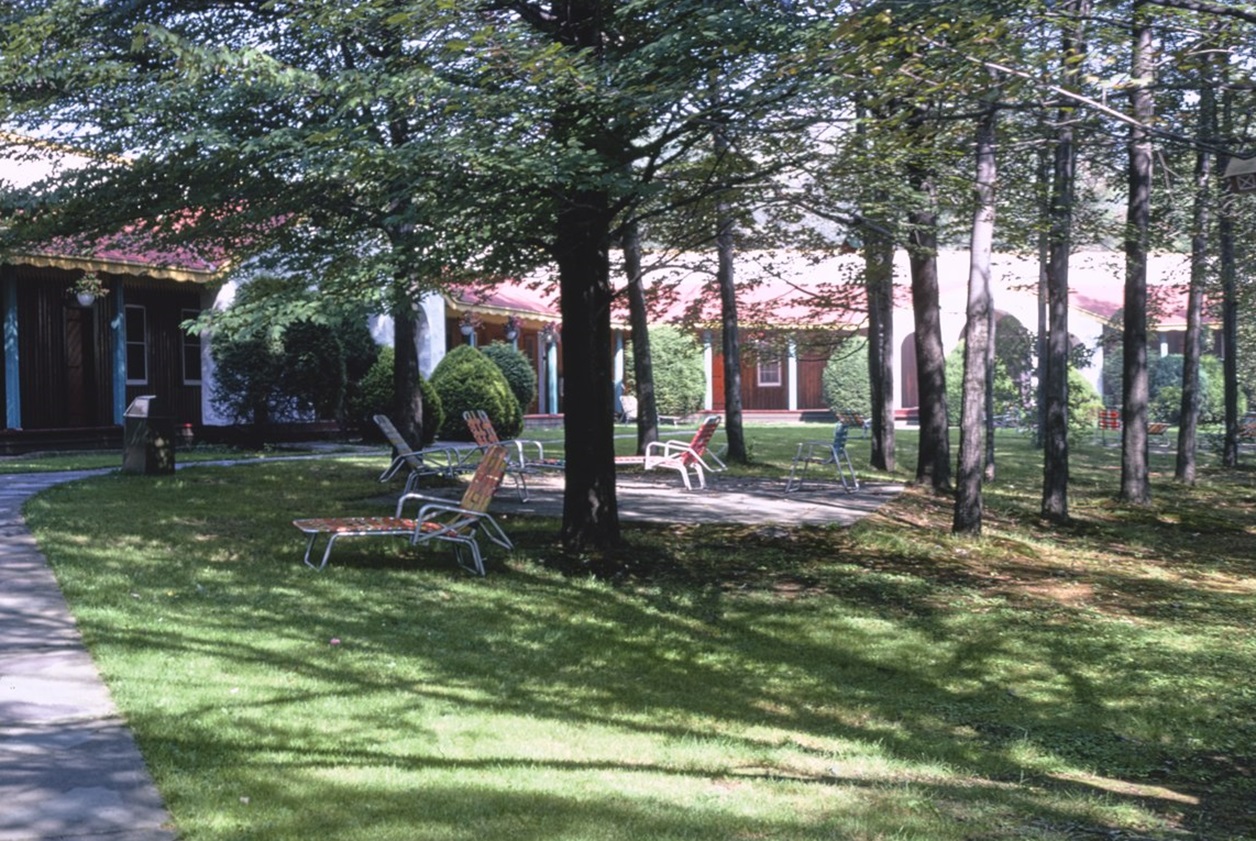 John Margolies , Wikimedia Commons
John Margolies , Wikimedia Commons
The Catskills Then
By the 1950s, the so-called Borscht Belt was THE hot spot for vacationing Jewish New Yorkers. Though there were hotels and cabins that catered to lower and middle-class visitors, there were also stunning resorts filled with the finest mid-century modern furniture and design. There were casinos and entertainment most nights.
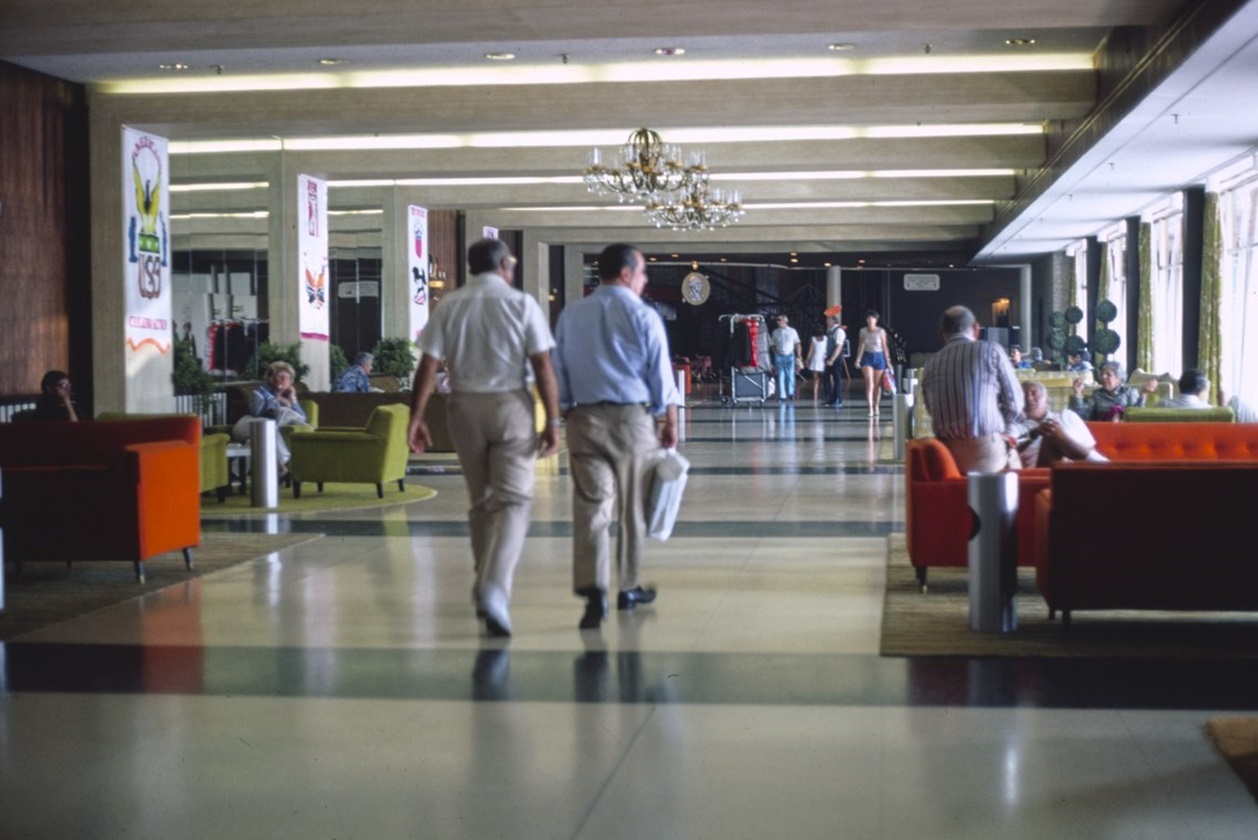 John Margolies , Wikimedia Commons
John Margolies , Wikimedia Commons
The Catskills At Its Peak
In the 1950s and early 1960s, the Catskills had swelled to over 500 resorts, 50,000 bungalows, and 1,000 rooming houses. However, that kind of boom couldn’t last, as external factors began to effect the viability of the Catskills as such a tourist magnet.
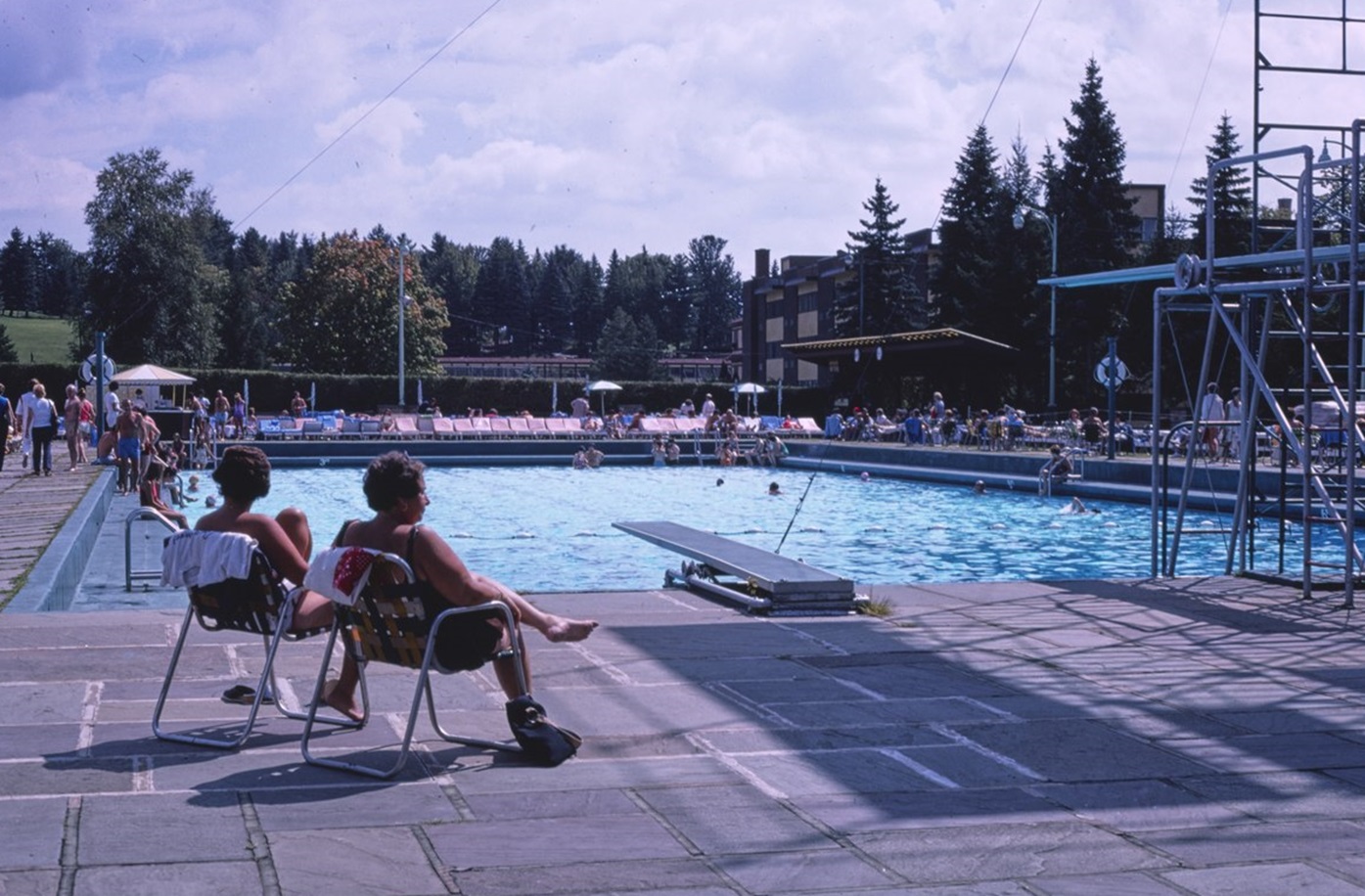 John Margolies , Wikimedia Commons
John Margolies , Wikimedia Commons
The Catskills In Decline
Thanks to the newfound accessibility of air travel—and perhaps a desire to break with the traditions of the previous generation—younger Jewish Americans chose different destinations for their vacations. Additionally, Jewish tourists faced less prejudice, meaning they had more options. The Catskills bore the brunt of these changes.
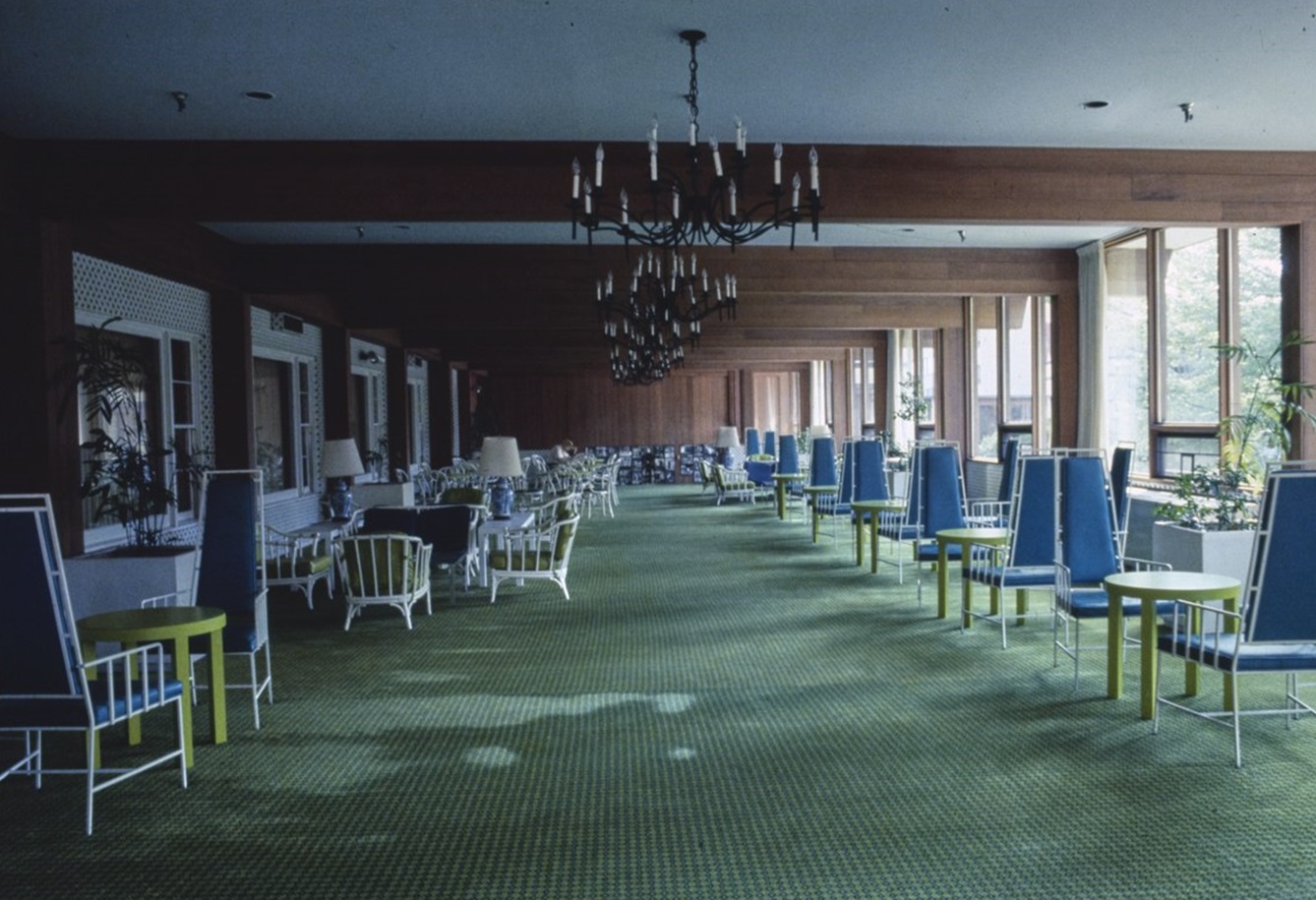 John Margolies , Wikimedia Commons
John Margolies , Wikimedia Commons
The Catskills Now
Many bungalow colonies fell into disrepair or were turned into housing, while the hotels did their best to get by. Most have been closed and demolished, though many properties have been converted to resorts and camps for Orthodox Jewish families in the state.
Additionally, numerous Hindu and Buddhist retreat centers have popped up in the Catskills, leading to a second—albeit very different—life for the area.
The Treasure Island Debacle
In the mid-60s, Walt Disney began acquiring land in Florida around Bay Lake, using dummy corporations so as to not attract attention. One of the properties that he bought was a small island in the lake which, at the time, went by the name “Riles Island”. Though Walt Disney World opened in 1971, the island—which was to become Treasure Island, and then Discovery Island—didn’t open until 1974.
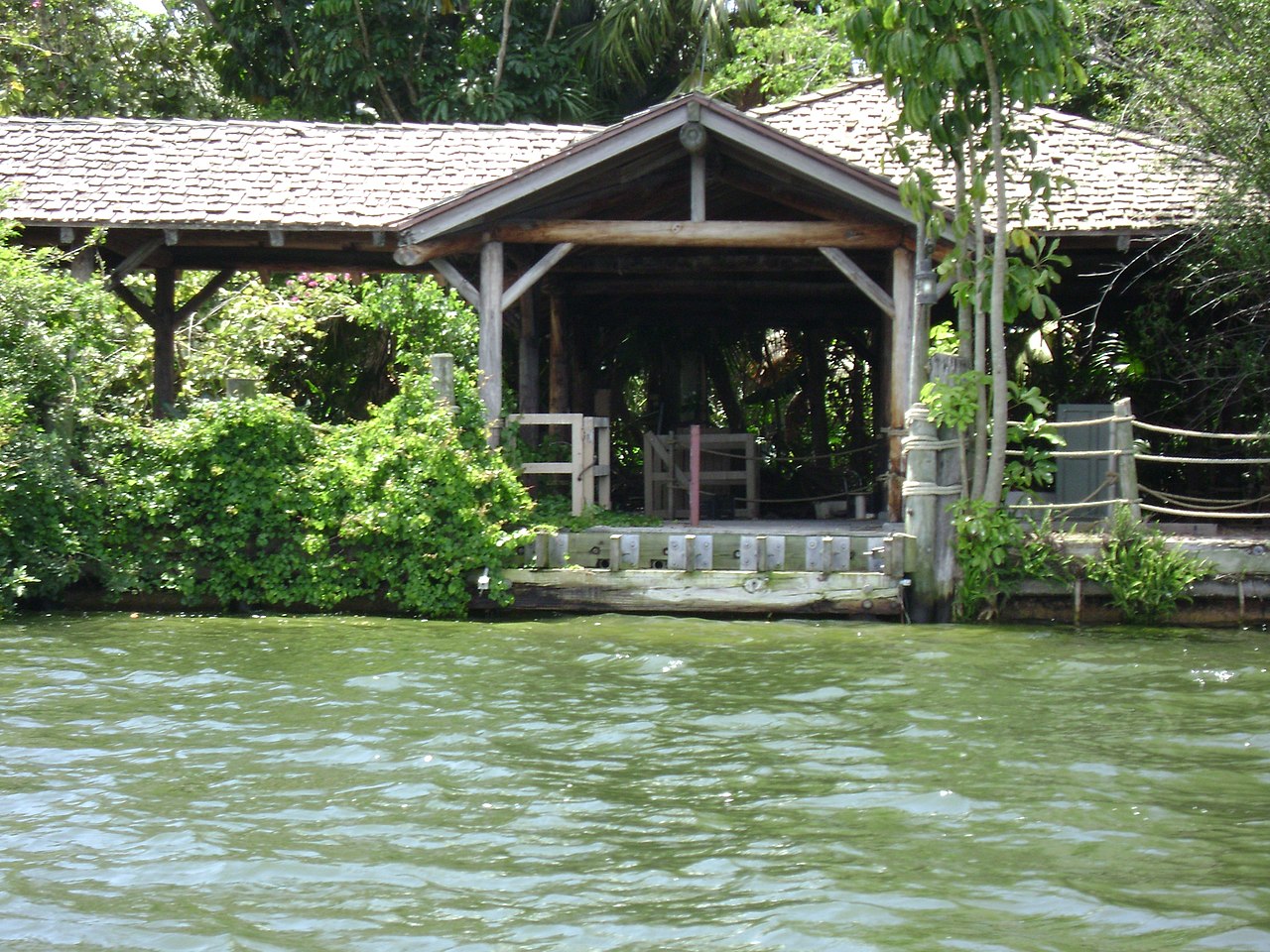 BestofWDW, CC-BY-SA-2.0, Wikimedia Commons
BestofWDW, CC-BY-SA-2.0, Wikimedia Commons
Walt Disney World’s Discovery Island Then
Treasure Island, which was later renamed to Discovery Island, featured a variety of wildlife that visitors to the park could observe, including Capuchin monkeys, lemurs, tortoises, alligators, flamingos, and a variety of other exotic birds. However, in the 90s, as Disney made plans to build a new attraction called Animal Kingdom—and after an investigation that involved 16 counts of animal cruelty—it became clear that Discovery Island was not long for this world.
Walt Disney World’s Discovery Island Now
Disney began to move Discovery Island’s animals to Animal Kingdom before eventually closing the area in 1999. Though it was not the first time that an attraction closed, what was remarkable was that Disney essentially abandoned Discovery Island. They left buildings and other structures behind untouched for the past 25 years.
And that wasn’t the only attraction that once drew tourists like flies.
Walt Disney World’s River Country Then
Two years after opening Treasure Island, River Country opened, the first water park at Walt Disney World. It was close to the Fort Wilderness Resort & Campground, and had a rustic swimming hole theme to match. There was sandy ground instead of pavement, beaches, water slides, and an artificial freshwater lagoon.
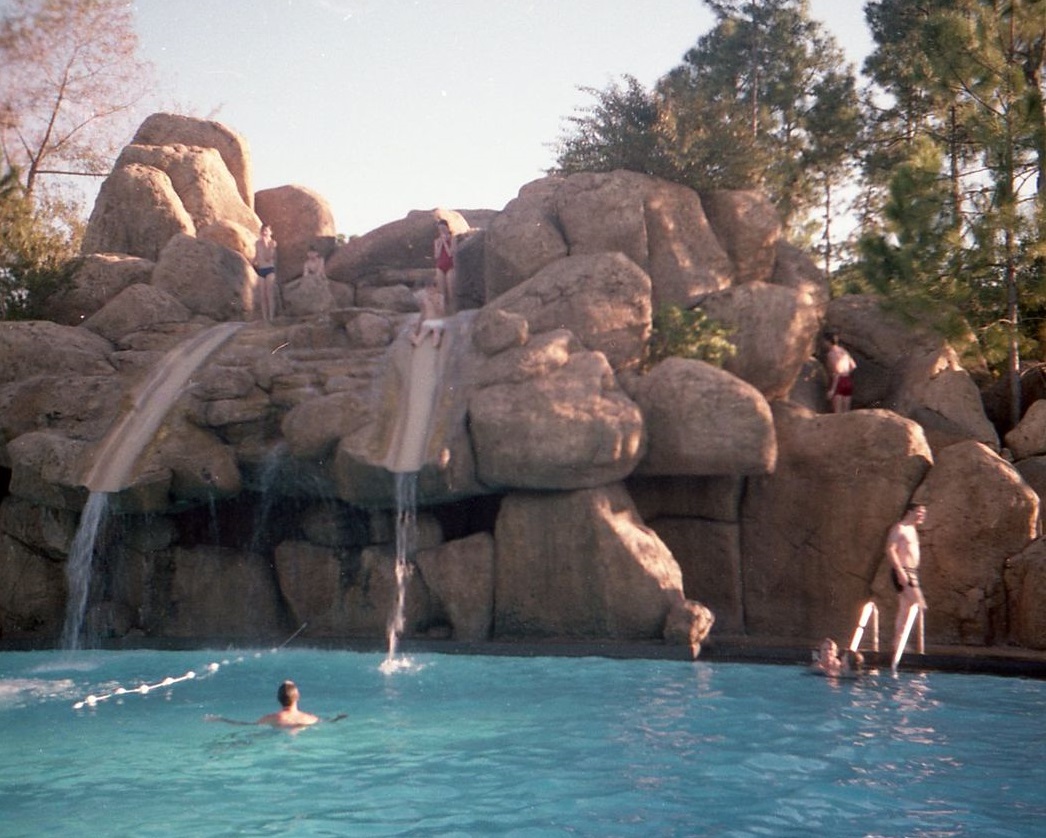 Steven & Courtney Johnson & Horwitz, CC-BY-SA-2.0, Wikimedia Commons
Steven & Courtney Johnson & Horwitz, CC-BY-SA-2.0, Wikimedia Commons
What Happened To River Country?
In 1980, an 11-year-old boy passed on after contracting an amoebic infection of the brain from the water at River Country. Though three others died, the park’s officials asserted that infections of this type were inevitable at water parks. There were also drownings in 1982 and 1989.
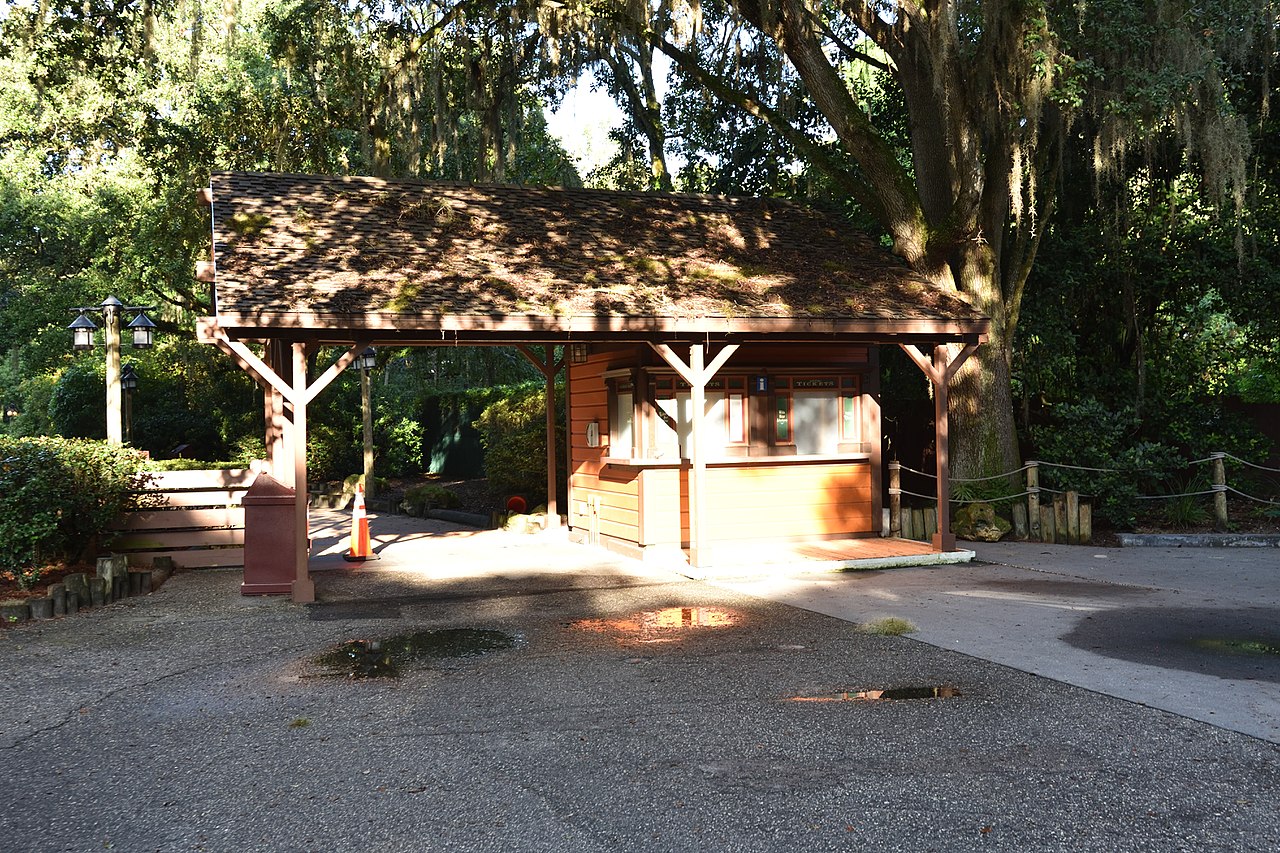 Quarax, CC-BY-SA-4.0, Wikimedia Commons
Quarax, CC-BY-SA-4.0, Wikimedia Commons
The Competition Moves In
Walt Disney World Went on to open two more water parks, both larger, in 1989 and 1995—which left River Country in the dust. It closed, though it was claimed to be temporary, in 2001. In 2005, park officials admitted it was permanent—meaning the memories of thousands of families were demolished in 2019 to make way for a new resort.
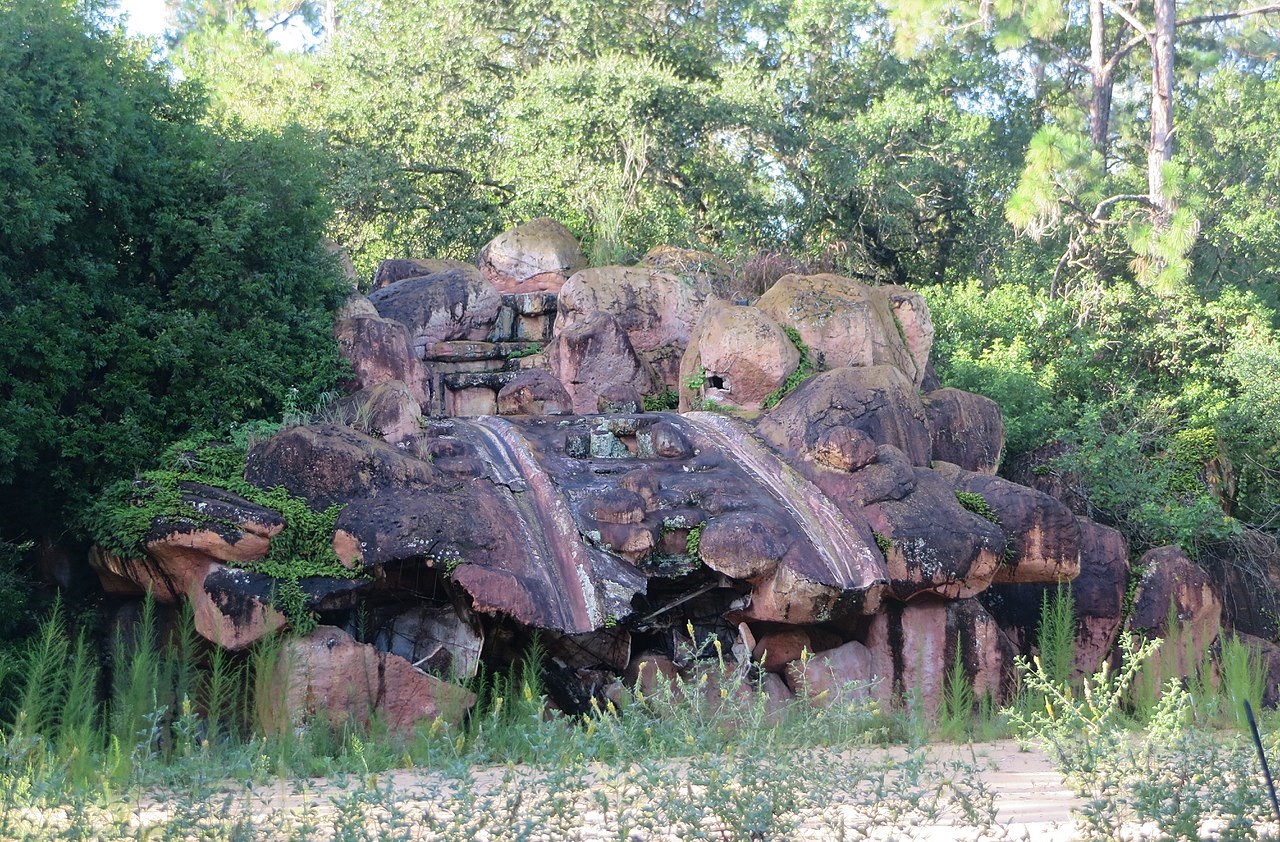 Quarax, CC-BY-SA-4.0, Wikimedia Commons
Quarax, CC-BY-SA-4.0, Wikimedia Commons
The Poconos
The Poconos were a year-round destination for the city dwellers of NYC and Philadelphia to escape too—you could cool down in the summer, and heat up the ski slopes in the winter. The name refers to an absolutely massive area, the Pocono Mountains, which encompass the Delaware State Forest, seven state parks, and six designated natural areas.
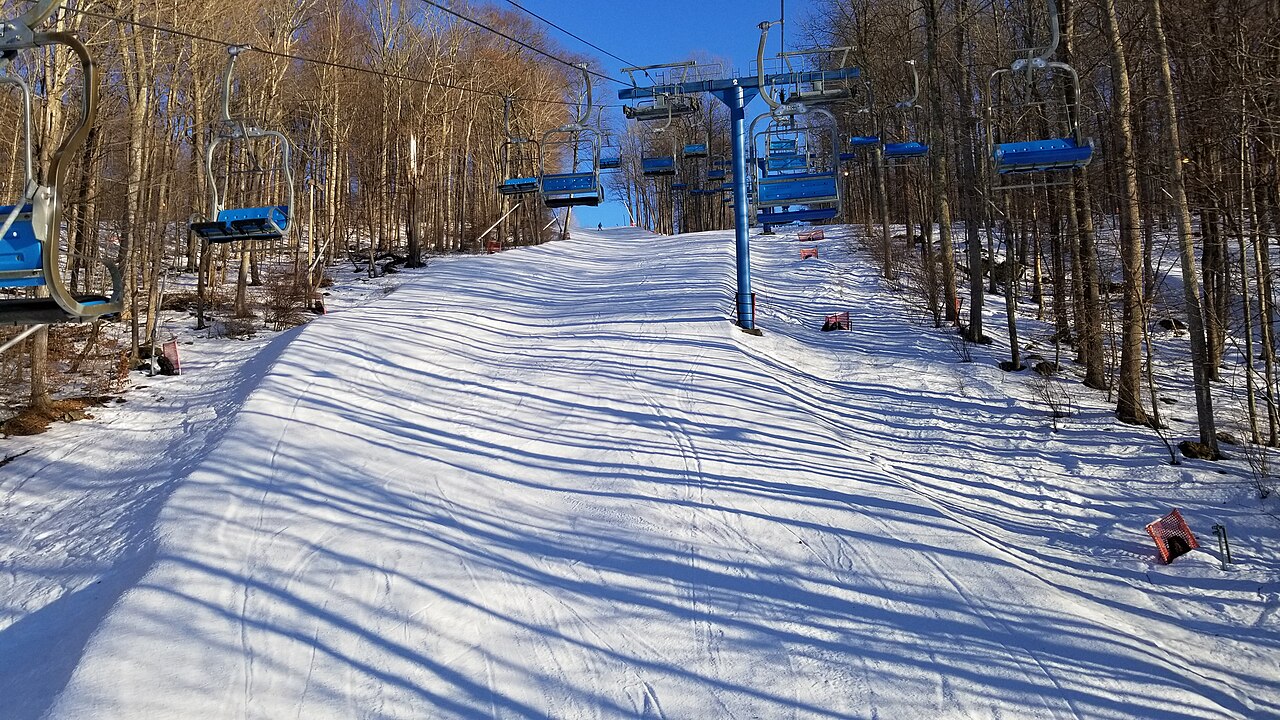 Trolley8, CC-BY-SA-4.0, Wikimedia Commons
Trolley8, CC-BY-SA-4.0, Wikimedia Commons
The Quakers Come To The Poconos
At the turn of the 20th century, two rival Quaker factions opened resorts in the Poconos, each of which espoused their values—no dancing, drinking, or fancy dress. It took until 1928 for a resort with a license and dance floor to open in response, and the once-modest resorts of the region soon bloomed into more luxurious digs.
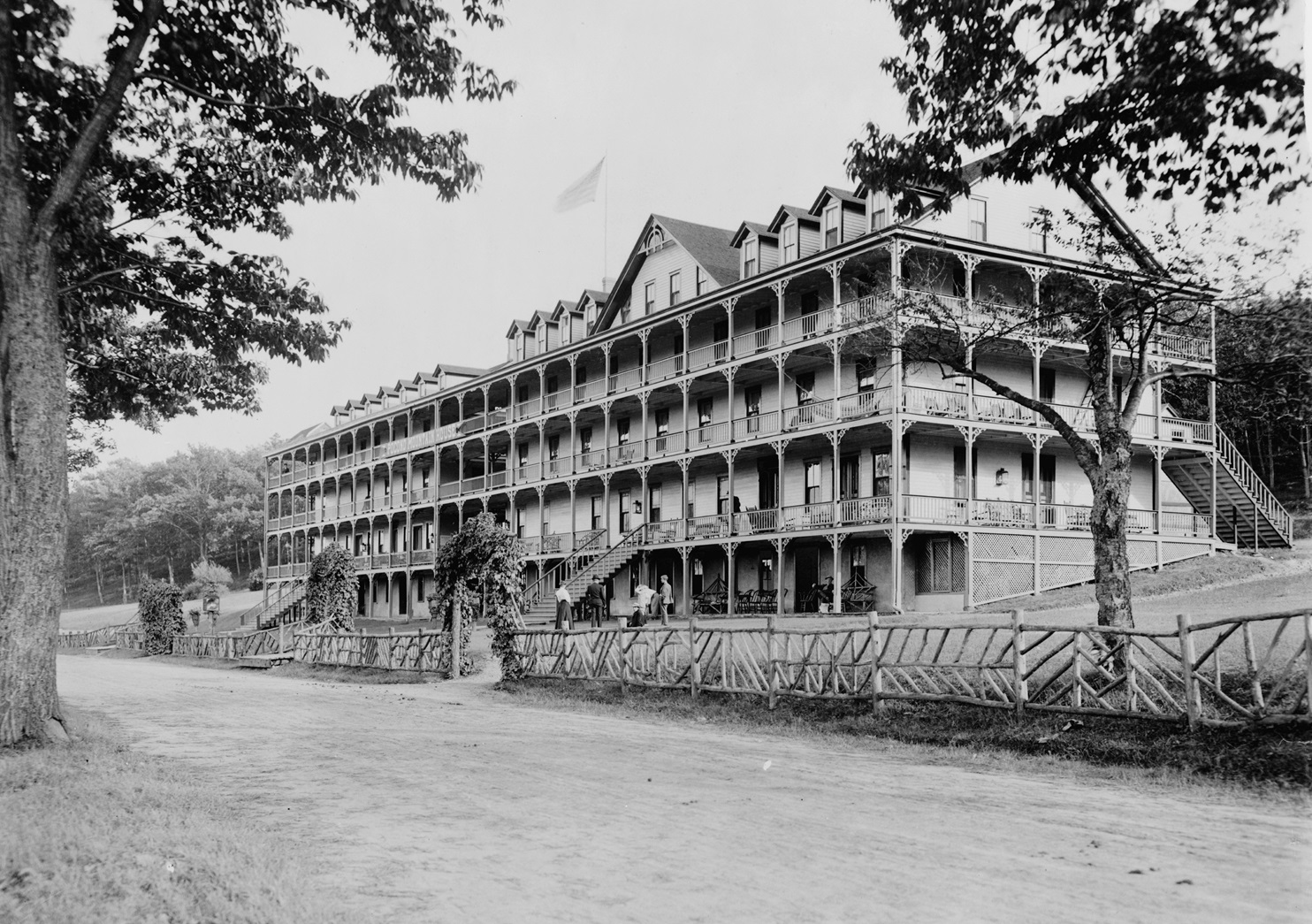 Library of Congress, Wikimedia Commons
Library of Congress, Wikimedia Commons
The Honeymoon Phase
The Poconos became a popular destination for honeymoons. At first, it catered to couples looking for a more rustic cabin experience, but this eventually morphed into more romantic—and occasionally ludicrous features in resorts, like themed rooms and two-storey champagne glass tubs. In fact, the heart-shaped bathtub was invented in the Poconos.
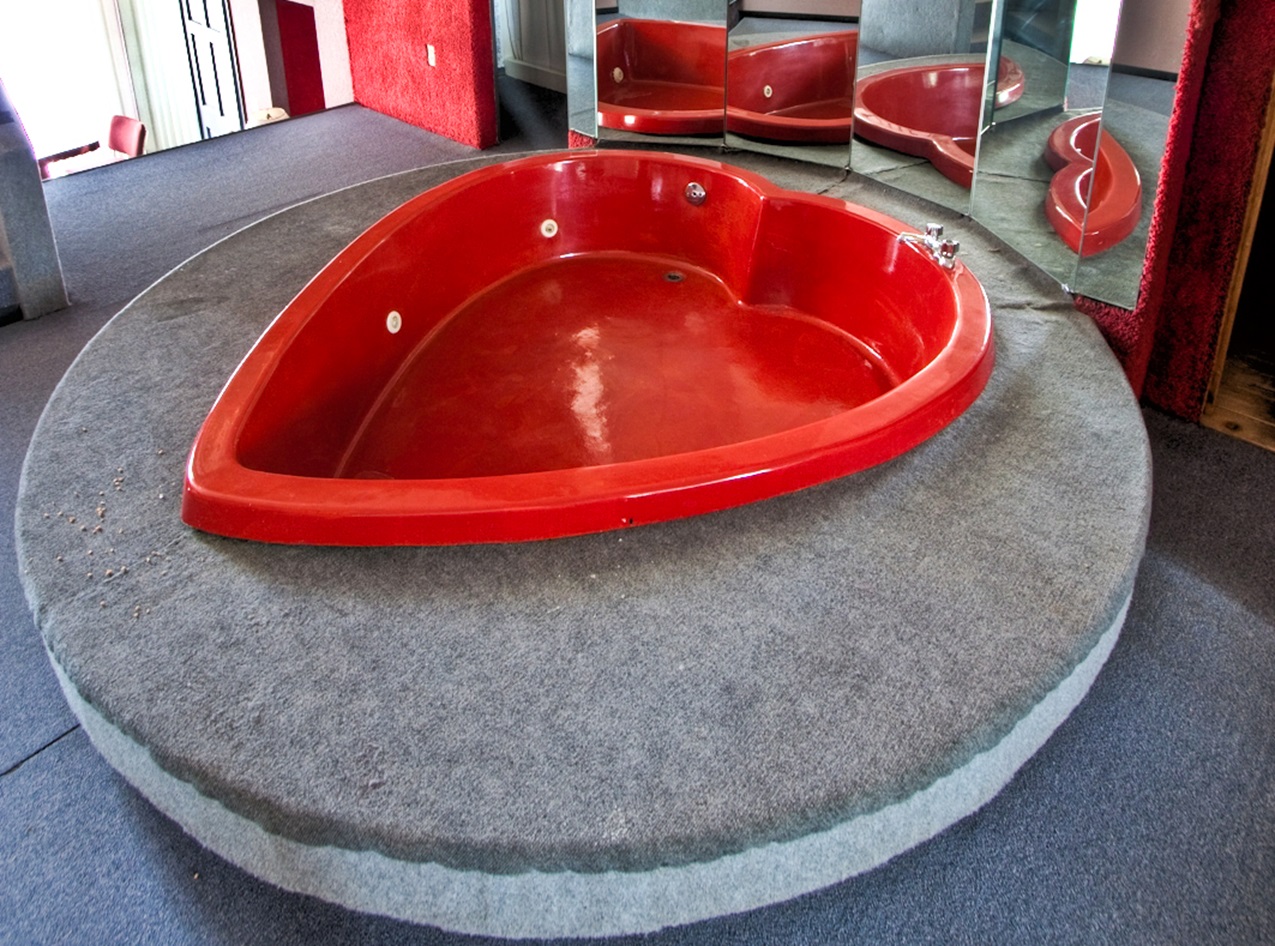 Jonathan Haeber, CC-BY-SA-2.0, Wikimedia Commons
Jonathan Haeber, CC-BY-SA-2.0, Wikimedia Commons
The Honeymoon Is Over
The popularity of the Poconos as a vacation destination lasted a little longer than many of its counterparts, with it hitting new heights for lodgings and visitors in the 60s and 70s. However, nothing can last forever, and by the early 2000s, many of the grand old resorts were slated for demolition.
The Poconos Now
While the Poconos were once more of a vacation destination than anything else, urban sprawl has become so intense that it’s now considered a commuter community for New York City and New Jersey. Additionally, most tourism has shifted from honeymoon business to family resorts like Great Wolf Lodge.
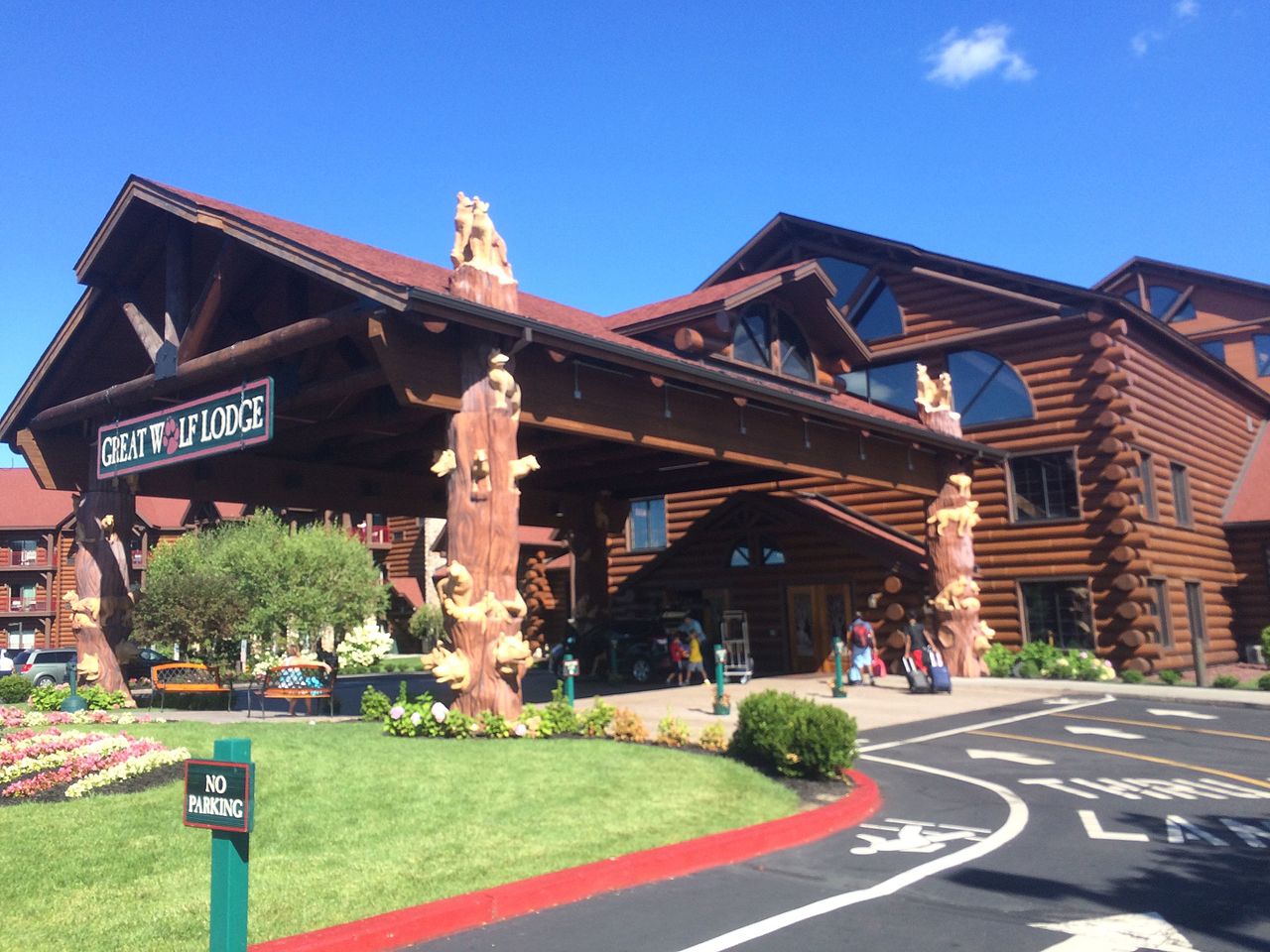 Carlos Pacheco, CC-BY-SA-2.0, Wikimedia Commons
Carlos Pacheco, CC-BY-SA-2.0, Wikimedia Commons
The Salton Sea
To explain the phenomena that is the Salton Sea in California would take a whole lot of lessons in irrigation and water flow—but suffice to say, this large lake dried up once in 1850 and nearly dried up again at the beginning of the 20th century, before excess water from the Colorado River used by farmers began to run off into it. It became so lush and rich with wildlife that people began to think it would make a great vacation destination for city dwellers from San Diego and Los Angeles.
First You Get The Fish…
The freshwater lake was stocked with a variety of fish, which attracted both sport fishers and birds—which, in turn, attracted bird watchers. An entire community popped up—not just yacht clubs and hotels, but also homes and schools. The Salton Sea became a real-life oasis in the middle of the desert, and tourists came in droves.
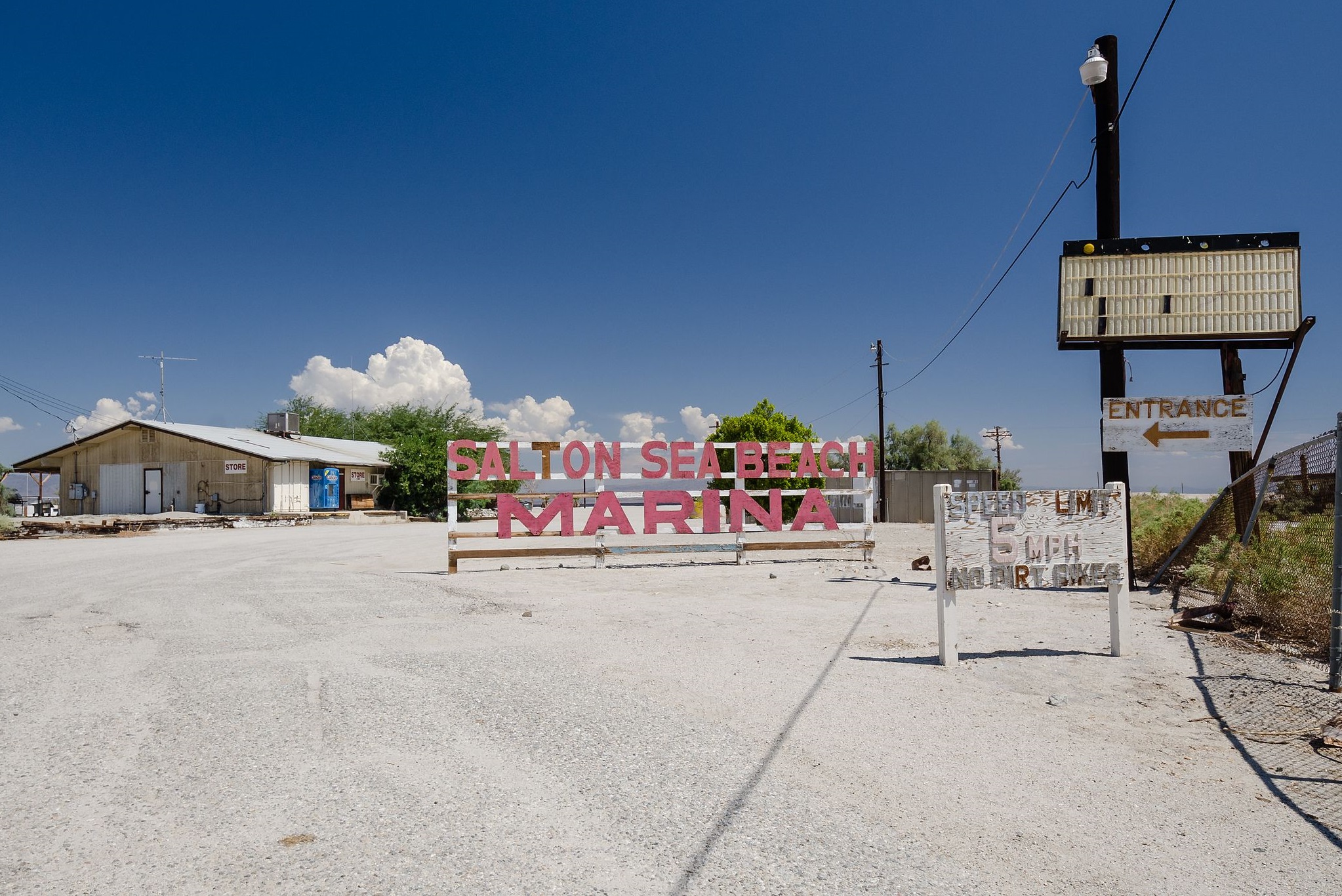 Tuxyso, CC-BY-SA-3.0, Wikimedia Commons
Tuxyso, CC-BY-SA-3.0, Wikimedia Commons
The Salton Sea’s Golden Age
Resorts and clubs welcomed A-list entertainers like Frank Sinatra, Bing Crosby, and the Beach Boys. People came to the area to fish, water ski, and play golf. It really was a hot spot, hosting some 1.5 million visitors per year until the 1970s—when something peculiar began happening.
The Salton Sea’s Decline
Once again, we won’t get into the vagaries of dams, irrigation, and evaporation, but suffice to say that a number of factors led to the water becoming saltier and saltier each year. The consequences were disastrous. The fish began to die off and the birds left—as did the people. Resorts were abandoned, storms brought floods and building damage, and the lake also began to smell terrible.
A Toxic Catastrophe
How could things go so wrong? Agricultural run-off brought algae blooms on top of the salt, leading to mass extinction events among the remaining wildlife. Incinerators had to run to burn the carcasses of pelicans who’d eaten botulism-poisoned tilapia. It truly seemed like a monument to hubris. Politicians like Sonny Bono did their best to help the area, but most remediation efforts were futile.
 Diarrhea, CC-BY-SA-3.0, Wikimedia Commons
Diarrhea, CC-BY-SA-3.0, Wikimedia Commons
The Salton Sea Now
The exposed lakebed of the Salton Sea has dramatically damaged the quality of air in the area, leading to horrific health problems among the residents. Some 20% of children in the area have asthma, compared to less than 10% nationwide. As the water continues to recede, local and state governments have scrambled to find solutions.
Needless to say, the Salton Sea is no longer the desert oasis paradise that once drew millions of tourists.
 Conn, Kit, CC-BY-SA-3.0, Wikimedia Commons
Conn, Kit, CC-BY-SA-3.0, Wikimedia Commons
Fort Lauderdale
It all began so innocently. The city of Fort Lauderdale in Florida began to attract college students when it hosted swim forums in the 30s. More showed up throughout the 40s and 50s. Then, in 1960, singer Connie Francis starred in a teen comedy that became an overnight hit—and Fort Lauderdale was never the same again
Where The Boys Are
The movie was called “Where the Boys Are,” and it depicted a group of girls going on spring break to Fort Lauderdale—the location of the aforementioned boys. The year after the movie came out, some 50,000 students visited Fort Lauderdale. And that number only grew each year that followed. By 1985, 350,000 spring breakers showed up—and it was just too many for the city to deal with.
Too Hot To Handle
In the late 80s, the mayor of Fort Lauderdale came up with a plan. They went on TV with the mayor of Daytona Beach, Florida, and begged students to go there instead for their spring break. Surprisingly, it worked—though Daytona, unsurprisingly, went on to regret the decision.
Fort Lauderdale Now
Though Fort Lauderdale, like many coastal cities in Florida, remains a popular tourist destination, it is no longer the spring break mecca that it was once. It now attracts cruise ships and wealthier, older tourists.
Varosha, Cyprus Then
What was the most luxurious resort in the Mediterranean in the 60s and 70s? It wasn’t Capri or the French Riviera. It was Varosha, a ritzy quarter in Famagusta, Cyprus. Hotels and resorts popped up quickly to serve famous visitors like Elizabeth Taylor and Brigitte Bardot. But just as quickly as it began, it ended—and went down in a blaze.
Varosha, Cyprus Now
Political unrest in the region came to a head in 1974, leading to widespread conflict. Still, there was hope that the luxurious destination would pull through—but then, in 1984, the UN declared the area off-limits to anyone except former inhabitants. Since then, its never regained its status as a tourist hotspot.
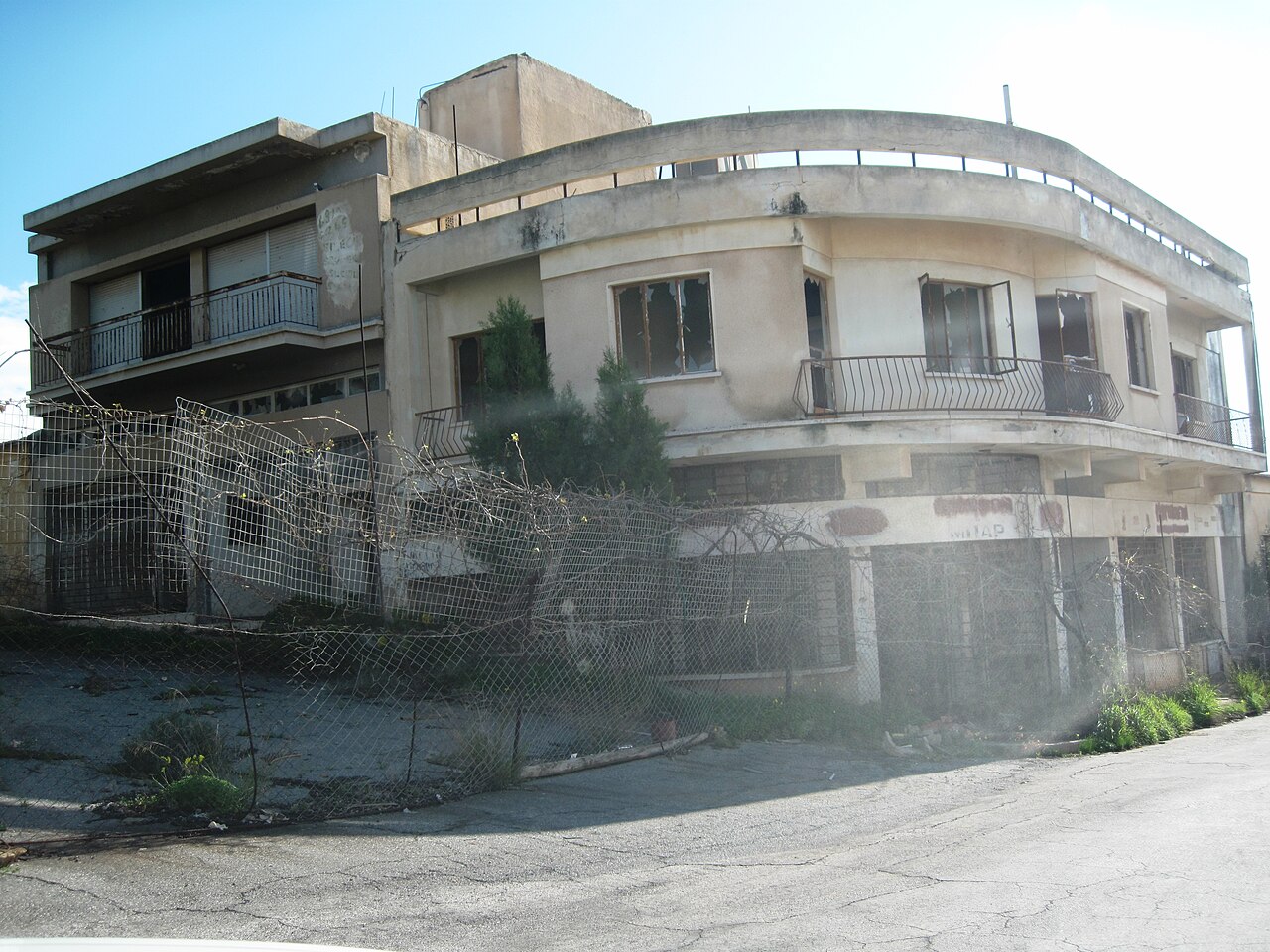 Dickelbers, CC-BY-SA-3.0, Wikimedia Commons
Dickelbers, CC-BY-SA-3.0, Wikimedia Commons
Lake George, New York
Lake George in upstate NY was another tourist enclave for urbanites based in and around New York City looking to escape the summer heat—as well as visitors from nearby Montreal, Quebec, Canada, since it was halfway between both on the rail line. Once upon a time, this family paradise was chockablock with resorts, hotels, and most especially, proximity to theme parks.
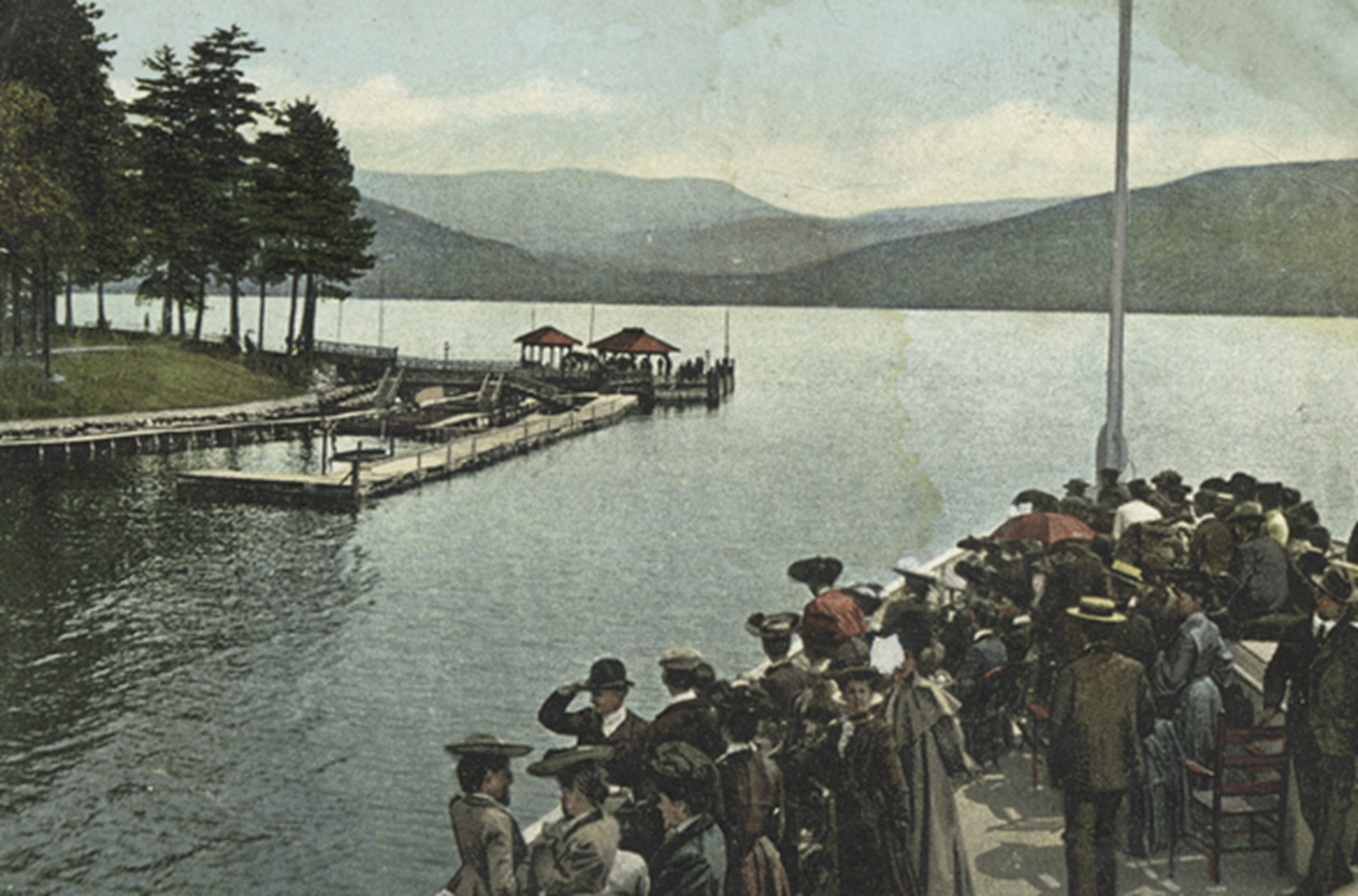 New York Public Library, Wikimedia Commons
New York Public Library, Wikimedia Commons
Lake George Then
The area became a beacon for the country’s elite, and families like the Roosevelts, Vanderbilts, Rockefellers, and Whitneys flocked to Lake George’s shores to stay at hotels like the Fort William Henry Hotel and The Sagamore.
Millionaires’ Row
Though some magnates, like John D Rockefeller, built more rustic camps in the Adirondacks as vacation homes, many millionaires flocked to the west side of the lake along Bolton Road to scoop up hundreds of acres of property and build massive, luxurious mansions, creating an area called Millionares’ Row.
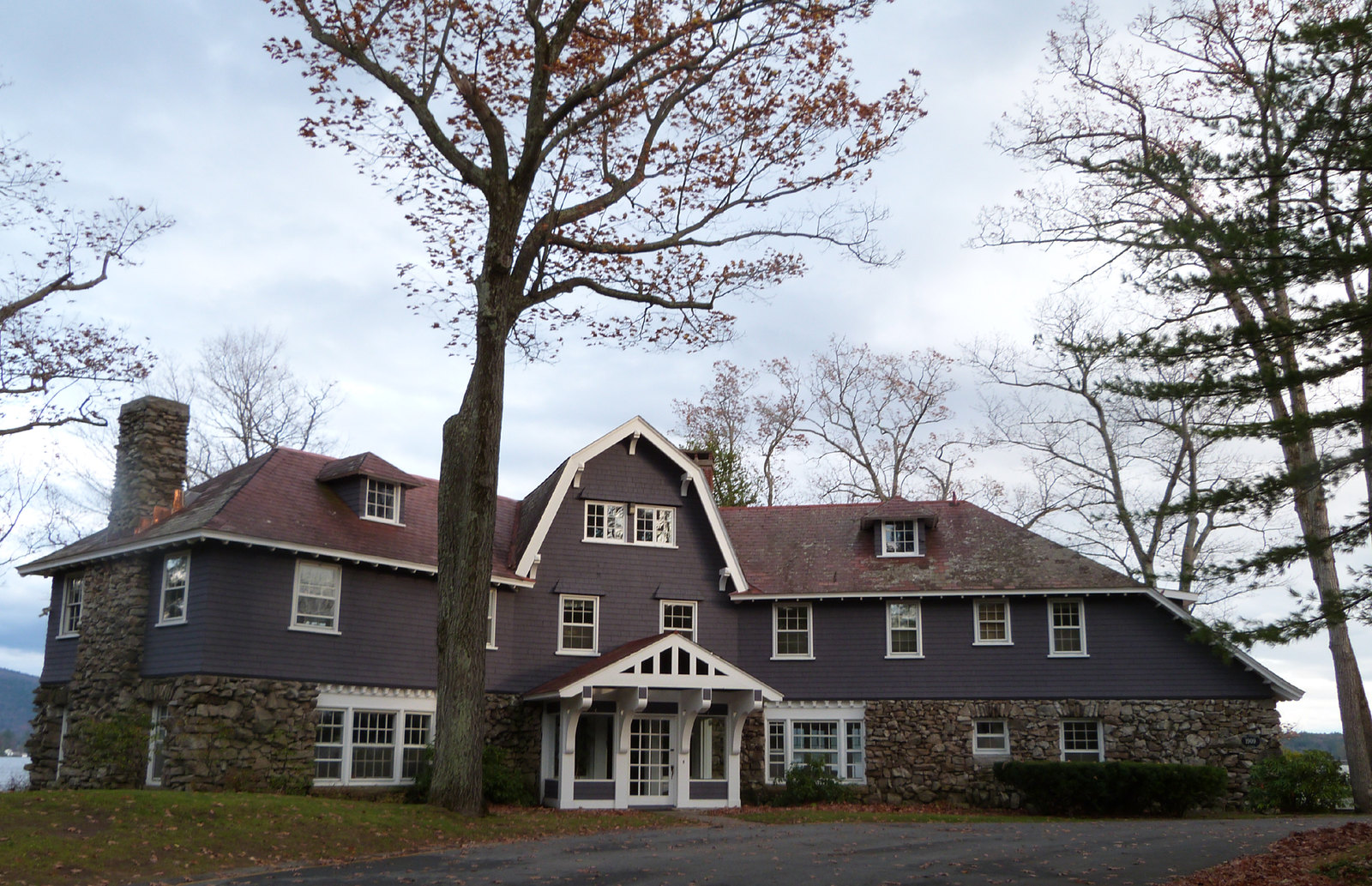 Carol Norquist, NGC Chairman, Flickr
Carol Norquist, NGC Chairman, Flickr
The Decline Of Millionaires’ Row
The introduction of income tax was a massive blow to Millionaires’ Row. Similarly to the troubles faced by the Borscht Belt, air travel made vacationing near Lake George less alluring in the late 50s. Many of the stately mansions were demolished to make way for hotels and attractions that catered more to America’s growing middle class.
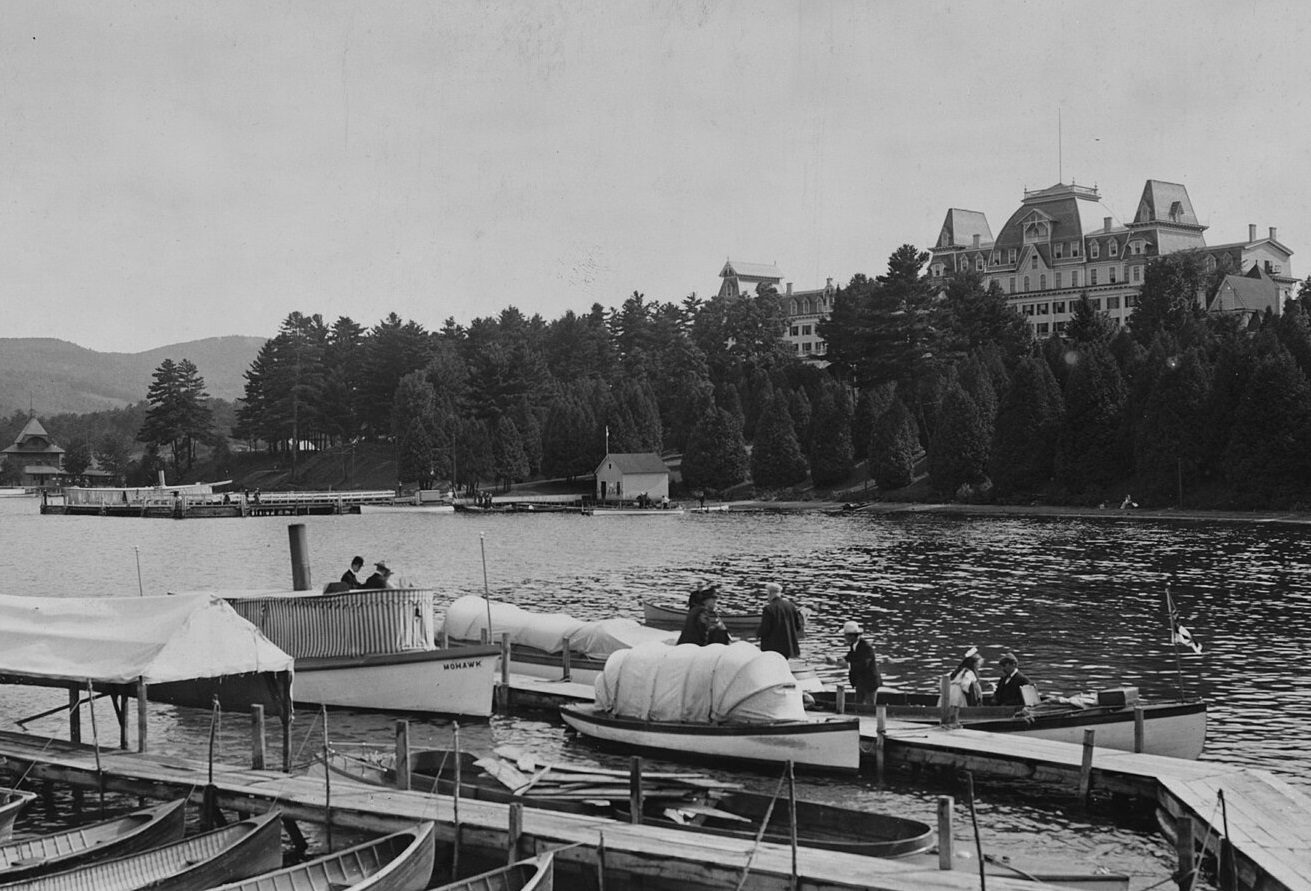 Library of Congress, Wikimedia Commons
Library of Congress, Wikimedia Commons
Lake George’s Theme Parks
As Lake George became a middle class destination, a number of theme parks sprung up hoping to cater to tourists to the area, including the Great Escape and Frontier Town. Located in North Hudson, NY, Frontier Town was a Wild West-themed park with rides, daily shows, and a pioneer village. It operated from 1952 to 1998, and then sat abandoned for nearly 20 years.
It now operates as a campground and day-use park.
The Las Vegas Strip
When the Hoover Dam opened in 1936, it meant that electricity could be had much cheaper—and the lights in Las Vegas suddenly got brighter. In 1946, Bugsy Siegel opened what would be the first casino on what would become the Las Vegas Strip…and it’s been bright, busy, and loud every second of the day since.
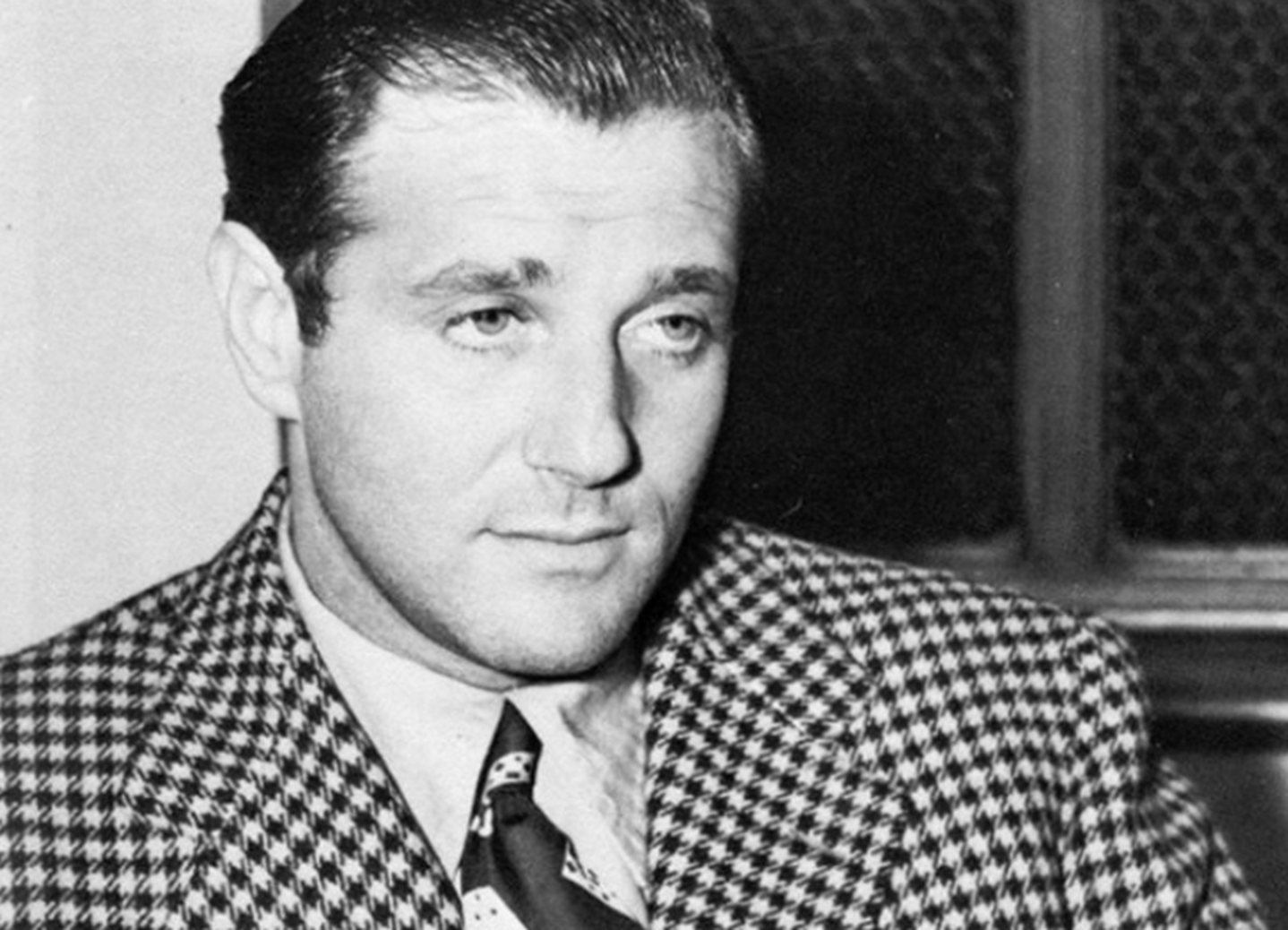 KirkAndreas, CC-BY-SA-4.0, Wikimedia Commons
KirkAndreas, CC-BY-SA-4.0, Wikimedia Commons
The Las Vegas Strip Then
The Flamingo. The Sahara. Caesars Palace. Stars, millionaires, and common folk alike flocked to the Strip for a taste of the Las Vegas lifestyle. Then, hotels with over 1,000 rooms—dubbed mega-resorts—like the MGM Grand came. Still, you could walk the strip and stumble from resort to resort, casino to casino, easily.
The Mega-Resort Era
In the late 80s and early 90s, the Las Vegas Strip lost the last of its smaller hotels and casinos to make way for more mega-resorts like the Mirage. The Bellagio, which was briefly the most expensive hotel to ever be built, was constructed for $1.7 billion. And iconic properties like the Dunes, the Sands, and the Stardust were lost forever.
 King of Hearts, CC-BY-SA-4.0, Wikimedia Commons
King of Hearts, CC-BY-SA-4.0, Wikimedia Commons
Throwing Things At The Wall
In the 80s and 90s, Las Vegas also tried to lose its “Sin City” image and tried to entice families to vacation there, resulting in the construction of attractions like water and theme parks. In the 2000s, the Strip mostly stuck to luxurious high-end ventures and properties. Later experiments included festival grounds, the Linq—a massive Ferris wheel, and the Sphere, a concert venue.
The Pedestrian Problem
The Strip attracts so many pedestrian visitors who attempt to traverse the now-massive, well, strip, that it erected footbridges beginning in the 1990s to offer pedestrians a safer option and alleviate traffic. Regardless, the Strip is now dominated by traffic at nearly all hours, and the added distance of the footbridges and elevated crosswalks—many of which are under constant maintenance and construction—have added made walking the Strip a labyrinthine pedestrian nightmare.
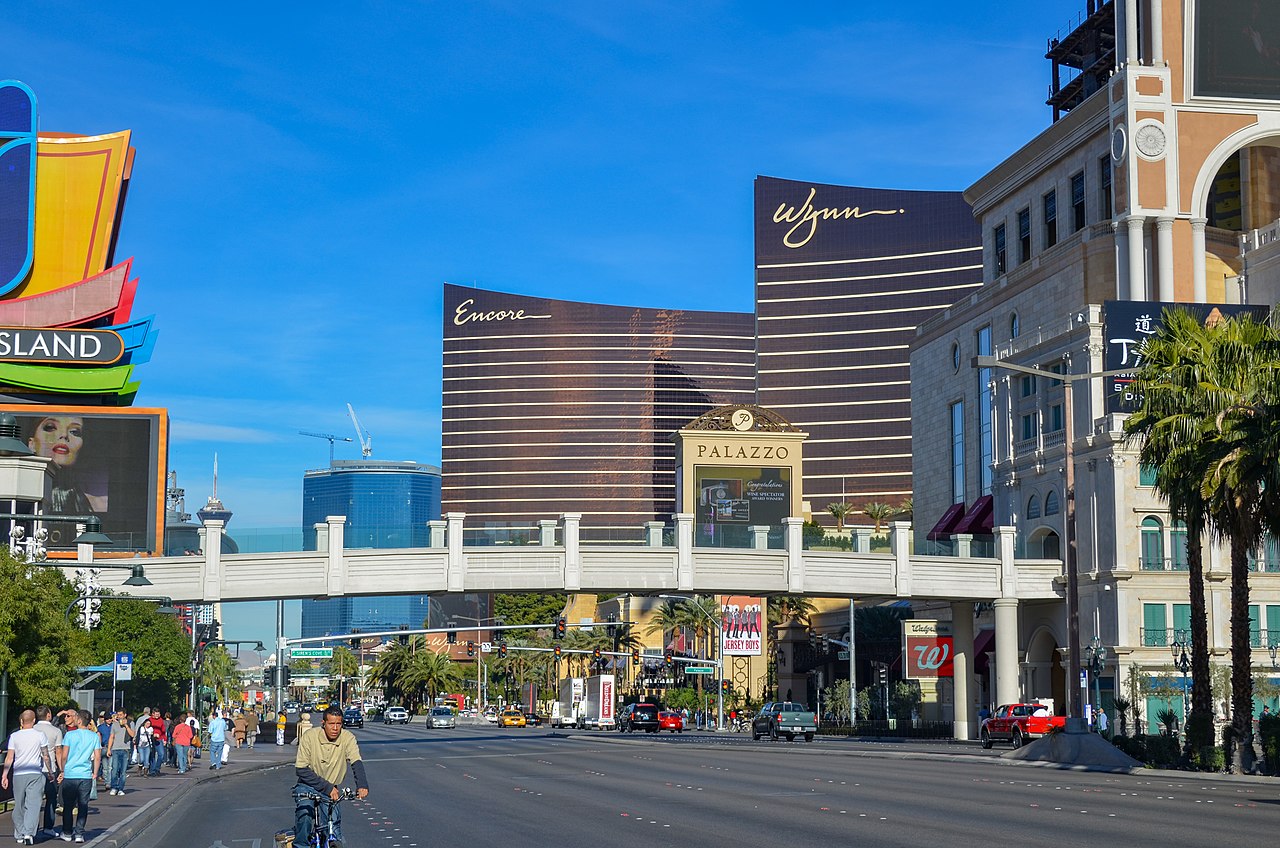 xiquinhosilva, CC-BY-SA-2.0, Wikimedia Commons
xiquinhosilva, CC-BY-SA-2.0, Wikimedia Commons
The Las Vegas Strip Now
Though the Strip is still just as attractive to visitors as it once was, options like the historic Fremont Street—as turns described as either “homier” (relatively) or “gritter”—now offer a more accessible experience, allowing visitors to easily travel between different hotels, casinos, stores, and restaurants.
Palm Springs
Palm Springs has an incredibly rich history as a tourist destination—in fact, it’s lived as many lives and survived more eras than pretty much any other hotspot on this list. But considering the luxury associated with the name, it had somewhat unglamorous beginnings…
The Birth Of Palm Springs
Though the area had been populated for thousands of years by the Cahuilia, it was a San Francisco lawyer named John Guthrie McCallum who began buying property there before realizing the dry climate would be perfect for the rehabilitation of his ailing young son. He brought in irrigation systems and opened a hotel. It didn’t take long for it to catch on.
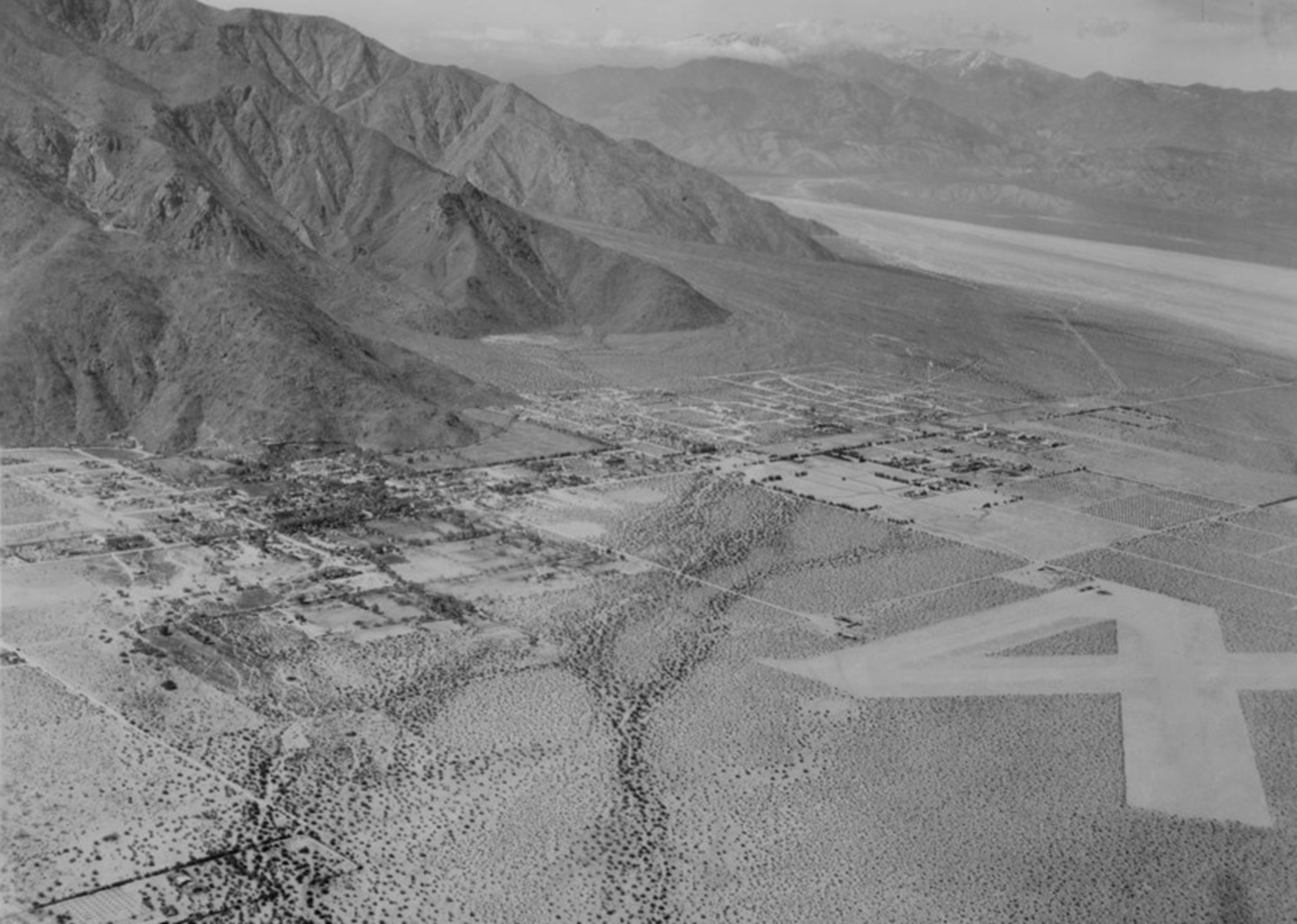 The U.S. National Archives, Picryl
The U.S. National Archives, Picryl
Palm Springs Then
In the early 20th century, Palm Springs became a go-to destination for people with health conditions who needed a dry, hot climate to convalesce. However, because the heat was too oppressive in the summer, it was mostly popular in other seasons. Multiple sanitariums opened, but as modern medicine advanced, negating the need for climate-based treatments, the area adapted.
Palm Springs And Architecture
It was actually McCallum’s daughter who ushered Palm Springs into its second era. In 1924, she opened a Modern/Art deco resort called the Oasis Hotel, designed by Frank Lloyd Wright’s son. It was the first of many hotels and resorts to emphasize architecture and design as the defining features of the area.
A Great Place To Play—And To Live
The hoi polloi and Old Hollywood glitterati began to visit Palm Springs for a respite from city life—only to fall in love and buy or build homes themselves in the city. Golf courses, sports facilities, luxury stores, and nightclubs followed.
The So-Called “Golden Age” Of Palm Springs
It’s reputation as a mecca for stunning modern architecture continued after WWII—but there was also a dark side to this golden age, as the local government systematically worked to eliminate or exclude poor people and Native Americans from the area, including a program meant to evict Black and Latino long-time residents of the city.
From Golden Age To Golden Agers
Though Palm Springs was mostly popular during the colder months, more retirees began to move there in the 1970s, turning it into a year-round destination. However, it still retained a reputation as a spring break destination—with all the rowdy behavior that brings—from the 1950s to the 1990s, when then-Mayor Sonny Bono actually shut down one of the commercial promenades to spring breakers.
Palm Springs Now
While Palm Springs still attracts millions of visitors a year, it shares many of the same problems that California faces as a hole—from a high cost of living to water conservation concerns. While it was once a destination for people from all walks of life, it can now feel like a playground for the ultra-rich.
With that said, if the Trixie Motel ever wants to invite us for a visit, we’d be there in the blink of an eye.

